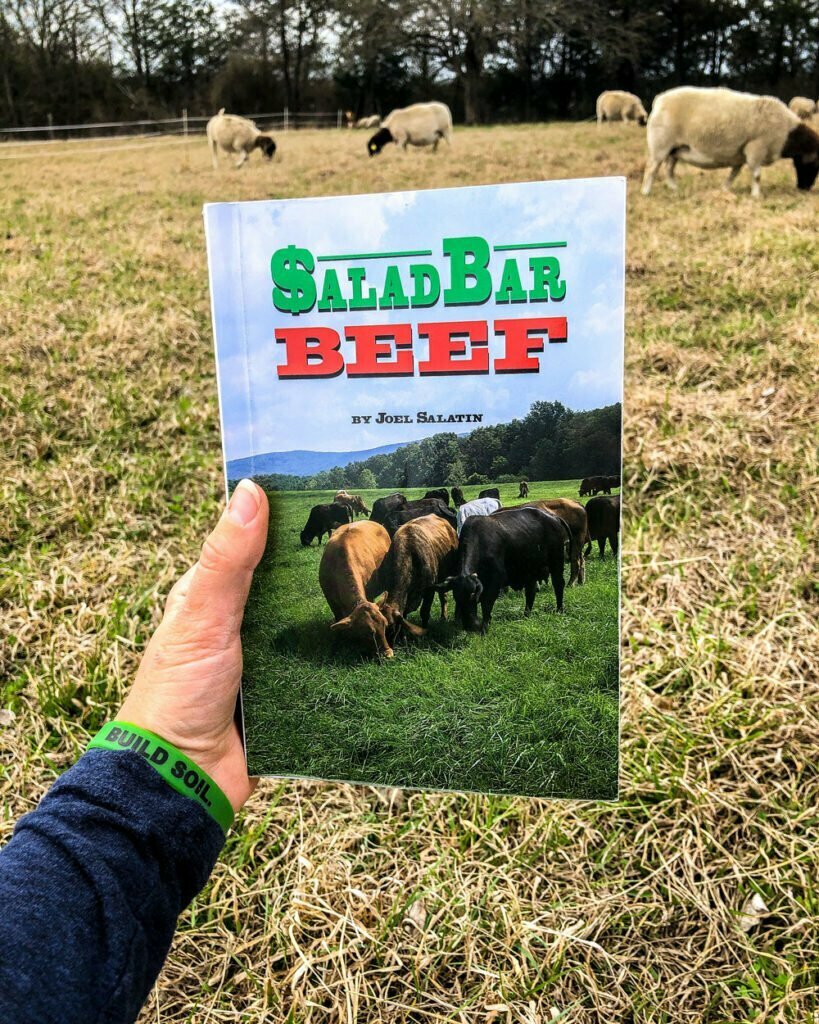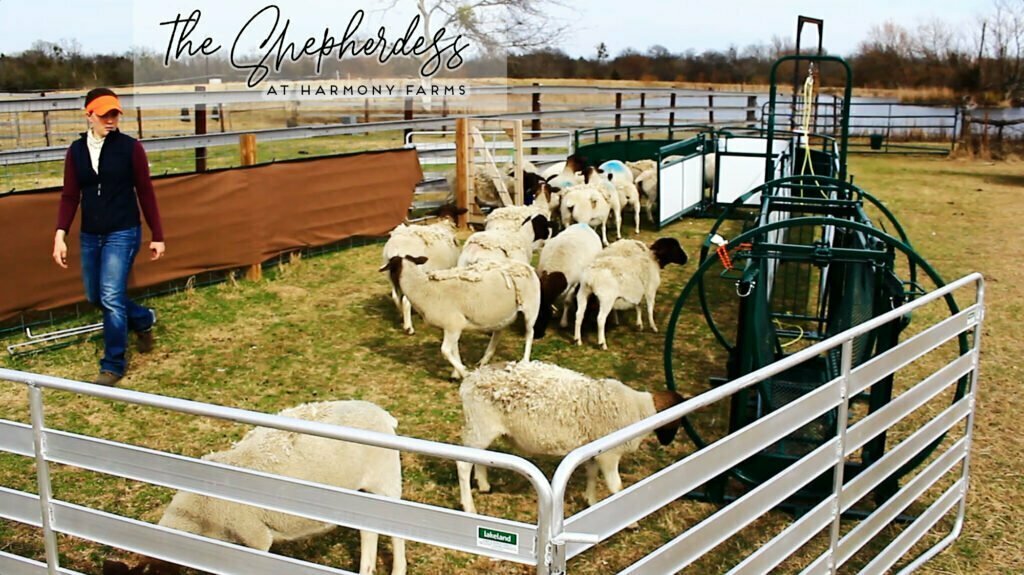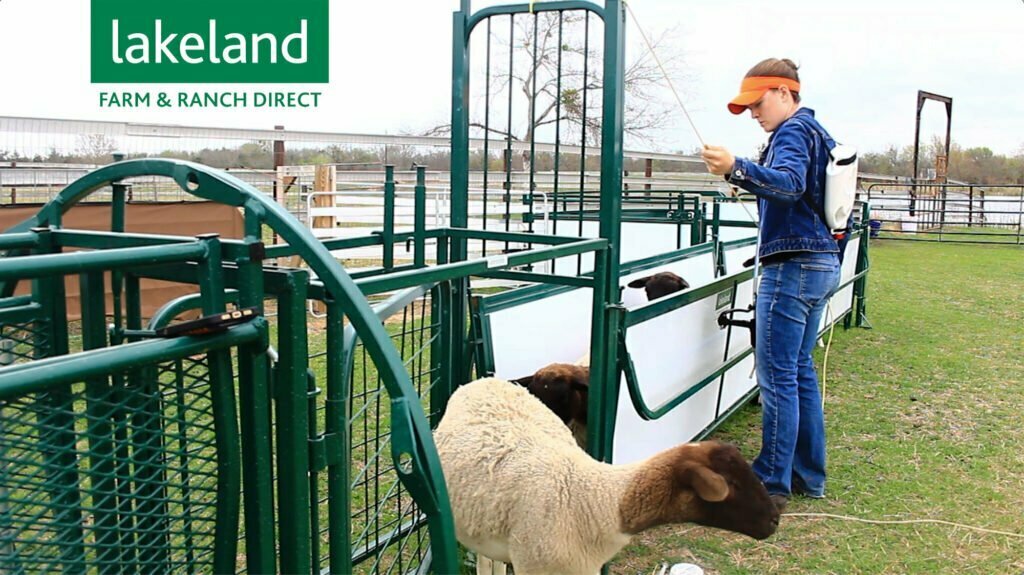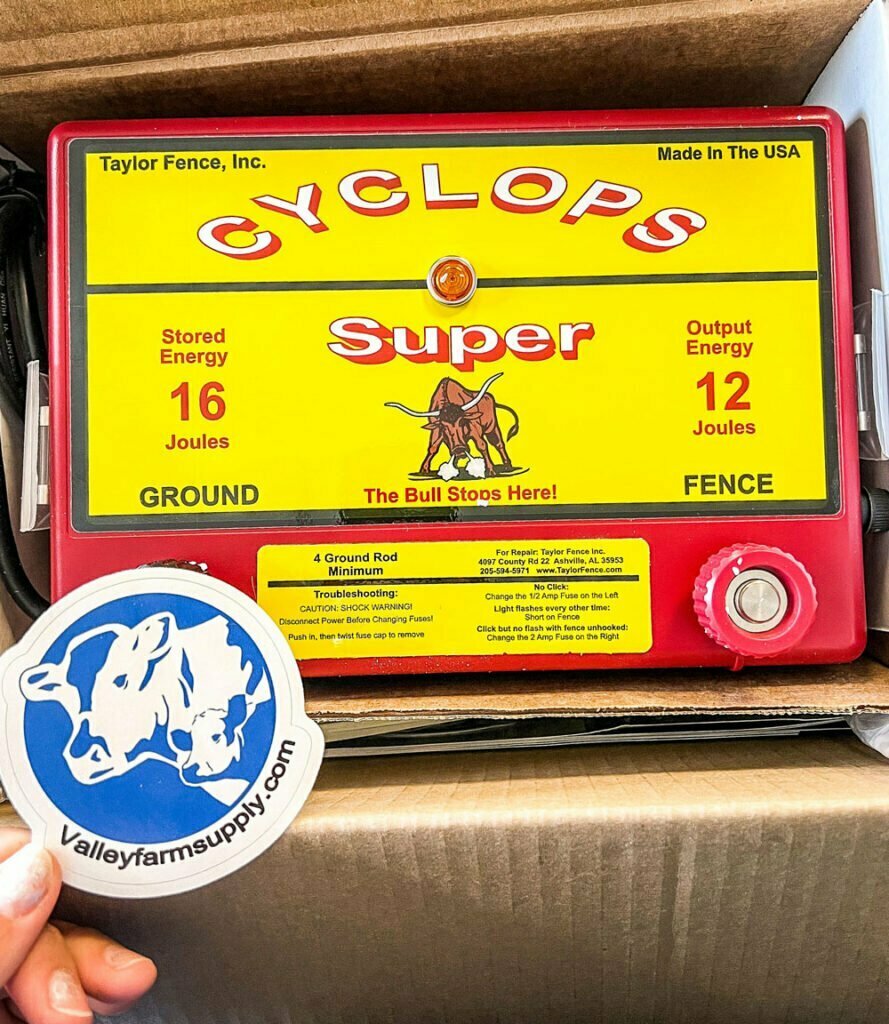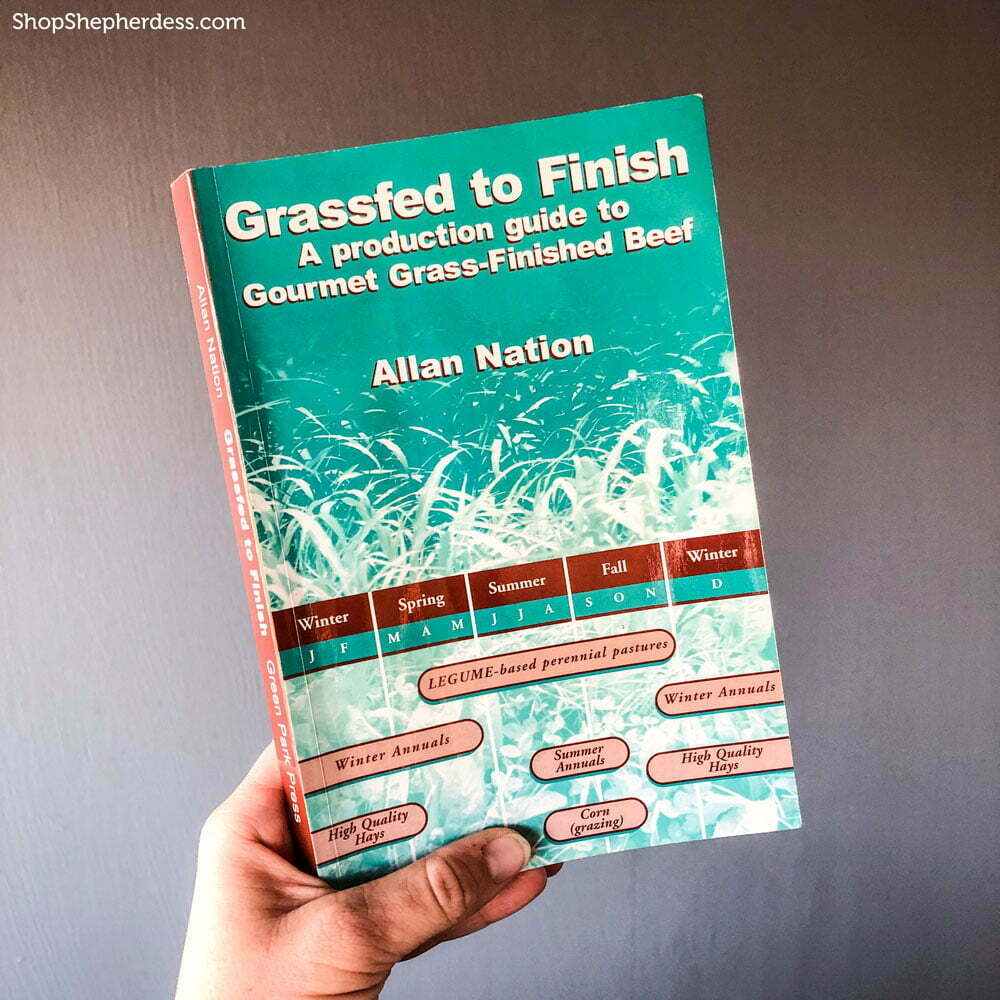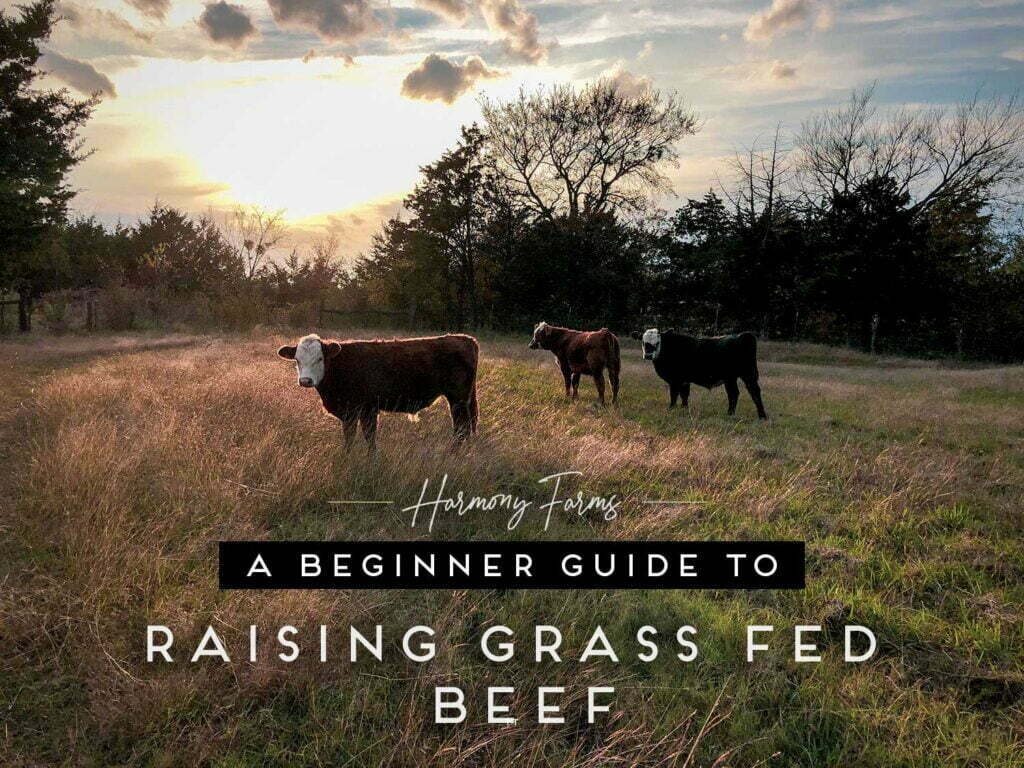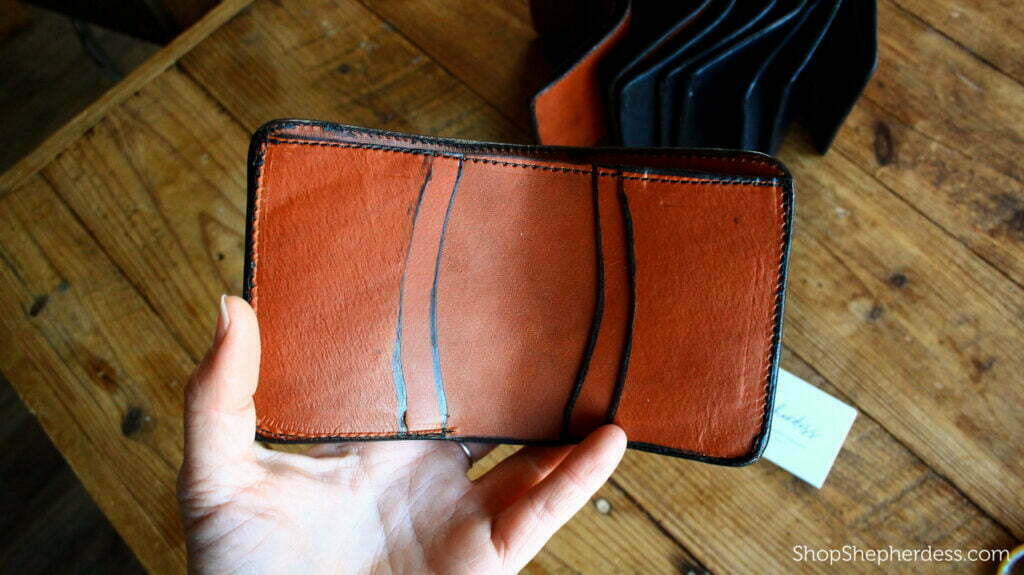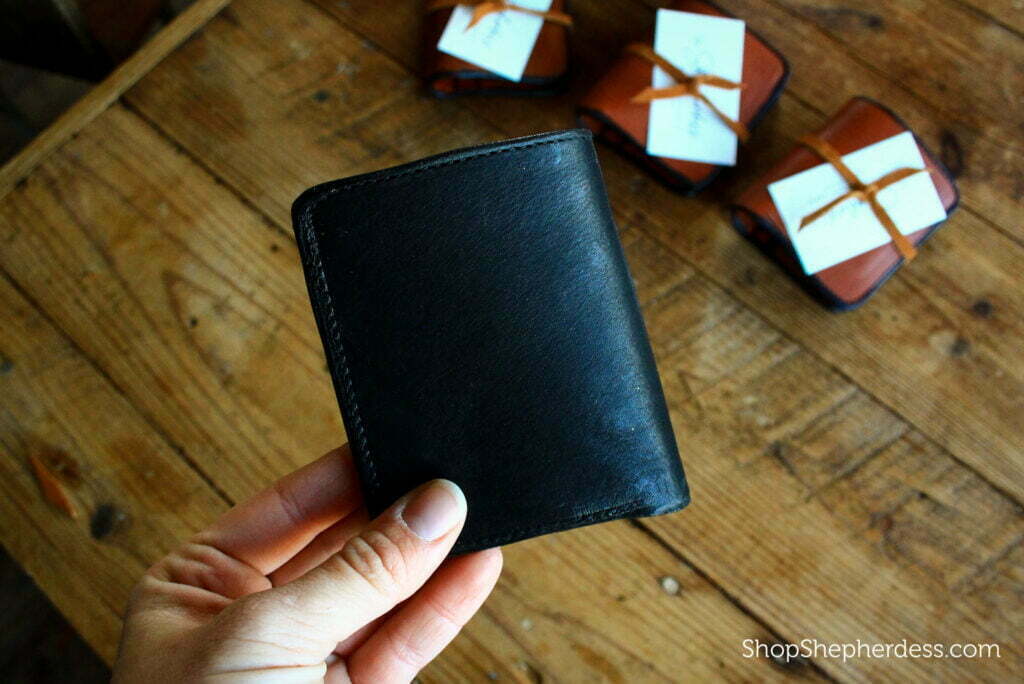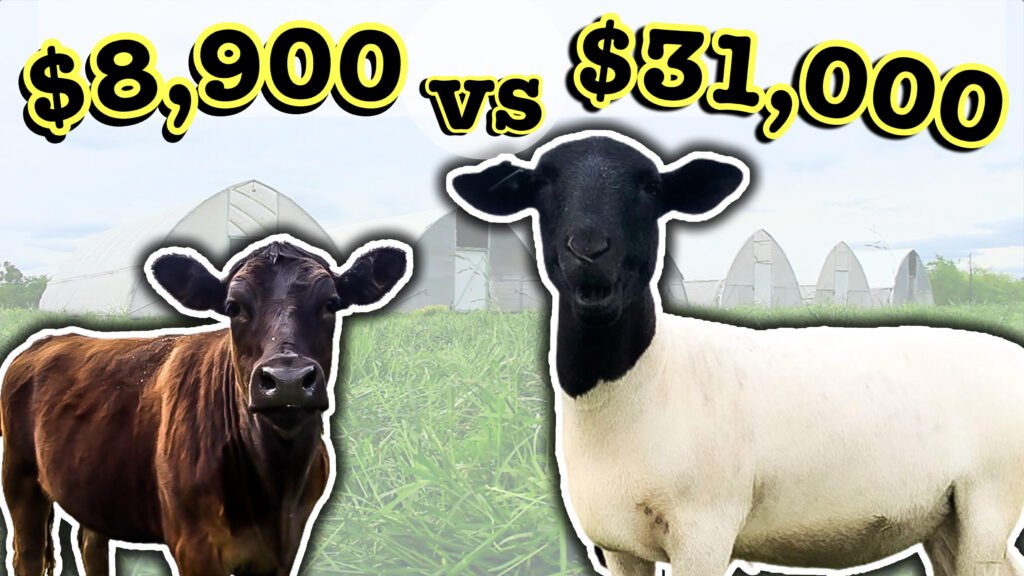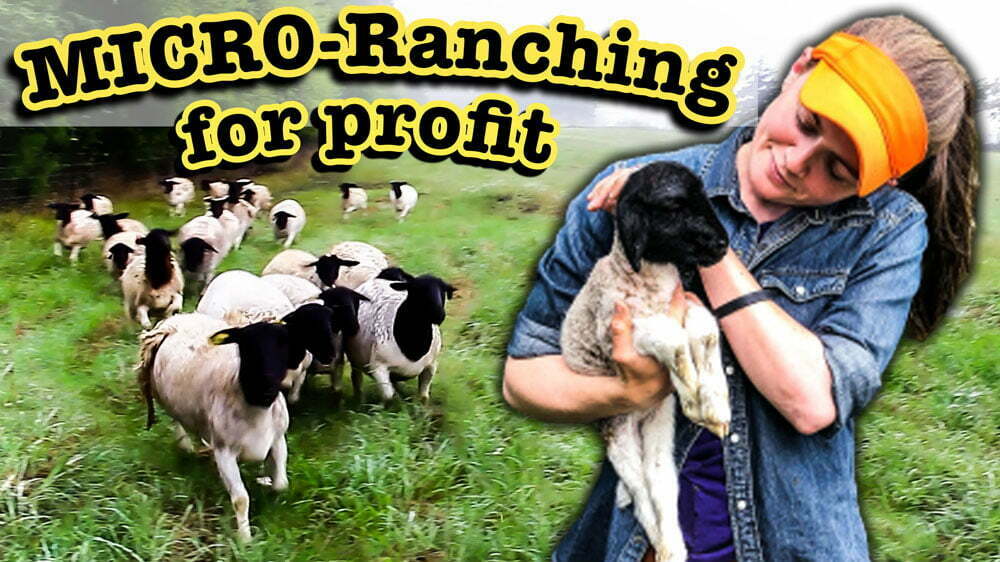-
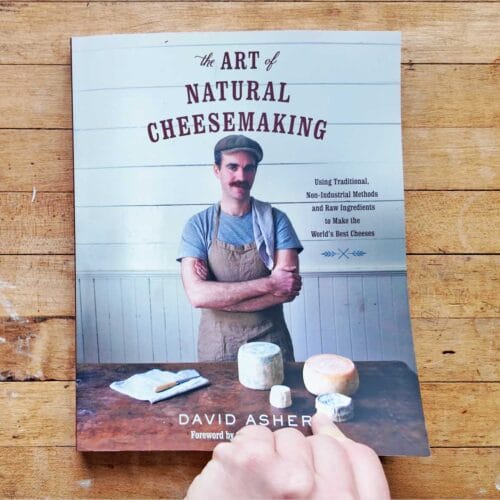 The Art of Natural Cheesemaking by David Asher$40.00
The Art of Natural Cheesemaking by David Asher$40.00 -
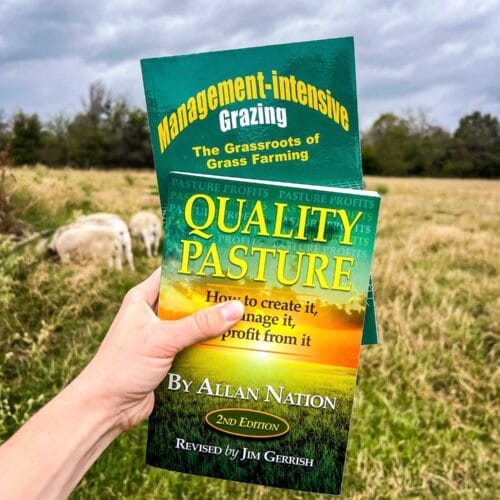 Pasture Management Starter Set (2 Books)$70.00
Pasture Management Starter Set (2 Books)$70.00 -
 Raising Sheep Book Bundle (3 Books)$107.00
Raising Sheep Book Bundle (3 Books)$107.00 -
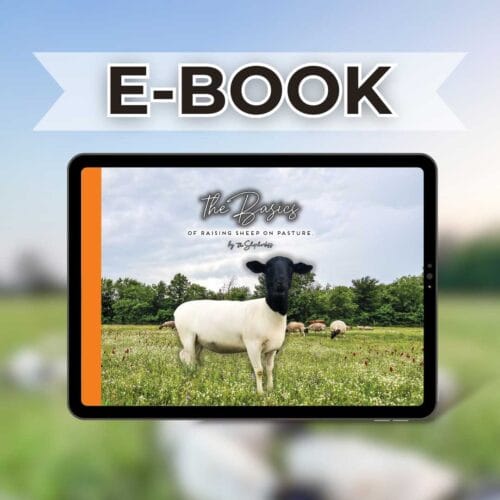 (E-BOOK) The Basics of Raising Sheep on Pasture$46.95
(E-BOOK) The Basics of Raising Sheep on Pasture$46.95 -
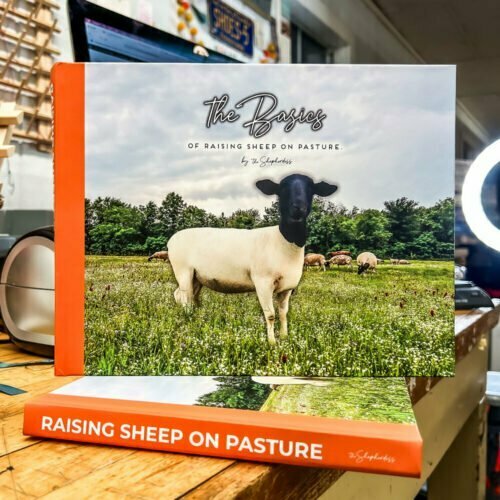 The Basics of Raising Sheep on Pasture | A Book for Beginners in Sheep$46.95
The Basics of Raising Sheep on Pasture | A Book for Beginners in Sheep$46.95 -
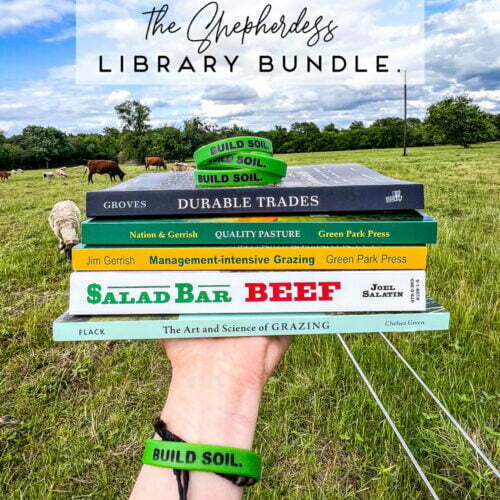 The Shepherdess Library Bundle (5 Books)$180.00
The Shepherdess Library Bundle (5 Books)$180.00 -
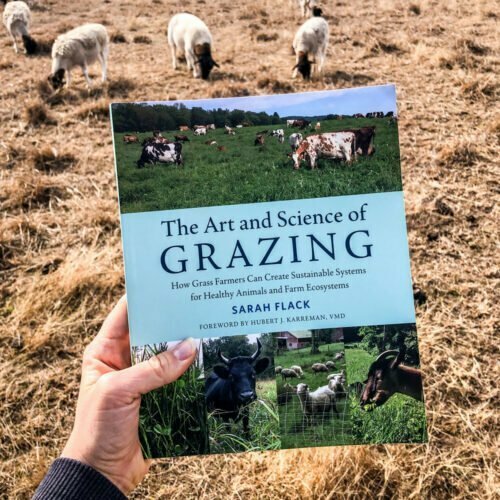 The Art and Science of Grazing Book by Sarah Flack$40.00
The Art and Science of Grazing Book by Sarah Flack$40.00 -
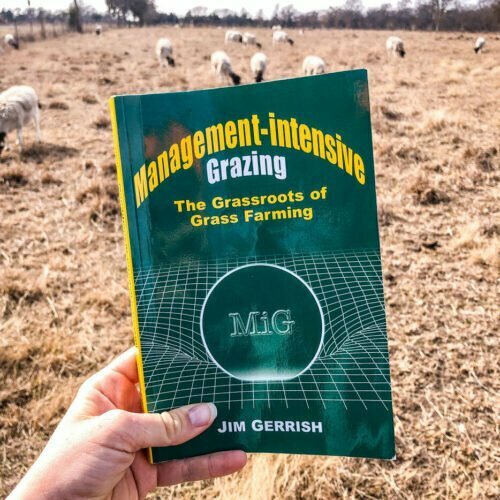 Management Intensive Grazing Book by Jim Gerrish$40.00
Management Intensive Grazing Book by Jim Gerrish$40.00 -
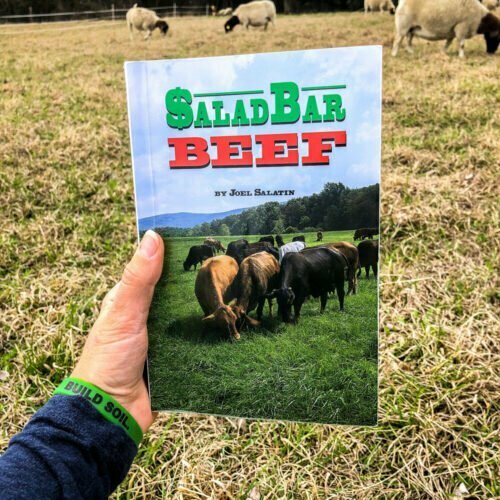 Salad Bar Beef Book by Joel Salatin$35.00
Salad Bar Beef Book by Joel Salatin$35.00
Hard Facts on the Amos Miller Case // Miller Organic Farm
Here is a report from the courtroom on the United States v. Miller’s Organic Farm case.
EMAIL: shepherdess (at) harmonyfarms.blog
Credits to @Fox News and @Rebel News for footage.
The “Amos Miller” story has gained momentum around the web as the USDA has restrained and raided his organic farming operation in Bird in Hand, PA. Amos miller produces chemical free grass fed beef, pork, chicken, dairy, and fermented foods; distributing to his customer base of 4,000.
Here are 3 facts that reveal what is really happening at Miller’s Organic Farm. 1. The USDA is specifically targeting Miller’s Organic meat processing operation, not his entire farm. Amos Miller processes and distributes beef, poultry, and pork which he processes in one of his self-made processing facilities. Animals are processed under the inspection and oversight of Amos Miller and not the USDA. According to USDA regulations, meat must be processed under the direct oversight of a USDA agent if it is going to be distributed direct to consumer. This regulation give the USDA direct control of the farm to consumer meat supply. However, setting the element of control aside, processing at a USDA facility poses problems for Miller’s customers. USDA processing facilities spray meat carcasses with citric acid, a chemical compound that produces allergic reactions in some of Miller’s customers.
2. MIller’s operation is healing not harming the public.
3. Miller is not being allowed to choose his own attorney. Federal Judge Edward G. Smith ruled that in the USDA vs. Amos Miller case “Amos Miller does not have the right to choose his own attorney”. Miller is taking his appeal to Third Circuit in Philadelphia. Miller states: “we have come to realize that the only way to save our hard working farmers and healthy foods is to legally challenge the government”. In the United States the US constitution is regarded as the highest law of the land. It was authorized in 1787, but 11 years earlier on July 4th, 1776 (a date we celebrate to this day) another document was signed which may be more relevant to us as individuals under our current administration. It is from the Declaration of Independence that I quote: “We hold these truths to be self evident, that all men are created equal, that they are endowed by their Creator with certain unalienable rights, that among these are life, liberty and the pursuit of happiness…. Whenever ANY form of government becomes destructive of these ends it is the right of the people to alter or abolish it…. Accordingly, all experience has shown that mankind are more disposed to suffer while evils are suffer able, than to right themselves by abolishing the forms to which they are accustomed.” I urge you to subscribe to my newsletter below for uncensored updates and please click on this video for a more in depth look at the regulations governing our meat supply chain.
Articles Cited in Video: https://lancasteronline.com/news/loca…https://www.law.cornell.edu/wex/conse…
————————————–
“Buy me a Coffee” to Support my Channel: https://bit.ly/ShphrdssCOFFEE
READ MY BLOG: http://bit.ly/ShepherdessBLOG
SHOP MY MERCH: http://bit.ly/ShepherdessMERCH
—————————–
About this Channel: This channel chronicles my journey as a sheep farmer from the very beginning. My primary occupation is in business management. In 2020, I discovered the principles of regenerative agriculture and embarked on a journey with the end goal of building a profitable small farm on 23 acres by 2027. Thank you for joining the journey!
HOW THE PIG MARKET CRASHED (and beef will too)
EMAIL: shepherdess (at) harmonyfarms.blog
Until 1998 the hog market functioned similar to today’s live cattle market:
A host of independent hog ranchers, both small and large scale, would grow pigs and haul them to auction. At the auction house, processors and packers would bid against one another for the supply they needed to satisfy consumer demand.
This meant that large or small, each producer would receive a fair market price for their pigs.
And this is because of the competition on the buying end. Buyers bidding against one another will drive the price of the goods up according to consumer demand.
However, in the pork market, the large packers began to bypass the open market and establish private buying contracts with select number of pork producers. With fewer buyers in the public market, live hog prices began to decline.
This monopoly finally culminated in 1998 when the large pork packers no longer needed to bid on the open market. They had secured a sufficient supply of hogs via contract and as such, they were no longer bidders.
What happened next was a dark and final chapter in the history of independent American hog farming. The absence of buyers drove the price of hogs on the hoof down from 56cents per lb to 8cents per lb in just one weekend.
Being that a “breakeven” point for hog farmers was 32 cents per pound, nearly all of the independent American hog growers went out of business in just a matter of weeks.
The beef market is following suit, but on a timeline that is lagging 30 years behind. In fact, 70-80% of the beef that is funneled through our food supply chain is already being purchased via private contract. And the reality that live cattle prices are down 50% from 1990-2022 reflects this fact.
We are truly on the brink of history repeating itself.
Mr. Wall advocates for measures such as the Cattle Price Discovery and Transparency Act to preserve what remains of the free market. I have put a link below to where you can contact your senator to endorse the act.
And I am looking at you the consumer: go to Eatwild.com and find your local farmer. The monopoly that is destroying the American rancher will soon destroy the American consumer, and I would argue that it already is. In 2020 there were no food shortages. Price spikes and empty shelves were caused by the fact that the processing facet of our meat supply is too big to operate under the pressure of national emergency.
What we have experienced over the past few years is a drill, a taste of what is coming down the pipe. And it is going to get really ugly.
Find your local farmer. You do not have to buy 100% of your groceries from them, but I challenge you to buy one of your grocery items from them on a weekly or monthly basis: whether it’s beef, or pork, or veggies… start small and source at least one food item from your local farmer.
And if you are interested in growing your own meat, tap this video on how I grew and locally processed 1000lb of beef as an absolute beginner… I’ll see you there!
-the Shepherdess
RECORD HIGH CATTLE PRICES AHEAD? | 2023 Cattle Market Projection
DISCOUNT FOR STOCKMAN GRASS FARMER: https://bit.ly/GrassFarmerGathering
SHOP THE BOOKS: http://bit.ly/ShepherdessMERCH
45 MINUTE PODCAST WITH CORBITT WALL: https://bit.ly/CorbittWall
Channel Guest: Corbitt Wall, FEEDER FLASH, NationalBeefwire.com
Join my Newsletter: http://bit.ly/ShepherdessNWSLTR
EMAIL: shepherdess (at) harmonyfarms.blog
In 2014 the live cattle market saw all time record high prices, with steers at 550lbs going from $1.63per pound in 2012 to $2.95 in 2014. What lead up to these record high prices?
In 2011, a red hot drought across the Deep South drove many ranchers to liquidate and herd sizes were reduced. Once precipitation returned to these drought stricken areas, ranchers began restocking, and prices went up for a very brief period of time…
Here in 2022 we are facing the same set of circumstances and possibly the same opportunity to cash in on our beef cattle, but there are 3 things we need to pay attention to:
#1. Any upcoming price spikes will be very short term. The 2014 price spike ended as quickly as it began. If there is an upswing in 2022-24 it will follow the same pattern and will not be a long term increase in prices. With the control that the 4 major meatpackers have on the commodity cattle market, the system is rigged. For more information on why American beef is endangered, click here.
#2. The upcoming opportunity in the conventional cattle market is for established ranchers and not for newbies. If you have extra grass resource and can buy good cattle out of these drought zones, go for it! But do not, as a beginner, build a herd in hopes for return on the commodity cattle market in 2023.
#3. Grass-based operations will benefit the most from an increase in commodity cattle prices. The price of corn has tripled over the past 2 years, going from $3/bushel to $9/ bushel in some areas of the country. In systems where grain is the primary means of putting weight on cattle, input costs will eat up any increase in margins. #4. Buyer beware that a portion of what we saw in 2014 may have been artificially stimulated and here is some insight.
For me personally, I am right here in the thick of east Texas drought conditions. I believe that if you have a little bit of beef, it might not be a bad idea to hang on to it. I am spending a little bit more than I normally would to retain the small herd I have. Not because I am planning to sell conventionally, but because I know that trying to rebuild a herd over the next few years may be more difficult and expensive than what I am feeding in hay at the moment.
And I want to continue to drill it in, If you are a beginner in beef, do NOT establish career in beef cattle chasing the ups and downs of the conventional market. Start you herd with the goal of direct to consumer meat sales… buy Salad Bar Beef at shopshepherdess.com. This book will lay out a direct to consumer marketing plan for your small beef herd.
Focus on becoming a marketer as much as you are a farmer. If you learn to market direct to consumer, prices on the conventional cattle market will have very little affect on you.If you are intimidated by the concept of marketing, I have a 6-step formula for building a full fledged marketing program for your farm. Click on the link below and I’ll send you a video on the topic absolutely free.
-the Shepherdess
“So then neither he who plants is anything, nor he who waters, but God who gives the increase.” 1 Corinthians 3:7
WHY TEXAS RANCHERS ARE SELLING THEIR CATTLE | DROUGHT 2022
When I shared the video of a 3 mile line of trailers dropping off cattle at my local sale barn, the question came up: why are so many ranchers selling at the same time?
The short answer is : they all ran out of grass at the same time. If you can find it hay is costing $85-100 per 1000lb bale. This means feeding a cow costs $2 per head per day. While this may not sound significant, many of these rural ranchers are raising 200-300 cows at a time. This means to feed their way through a summer drought would cost $54k on a herd of 300 cows from June to September… Only to turn again and spend the same money to feed again through winter.
What’s more is that it even IF a rancher wanted to feed his way through a drought, the hay is difficult to find this year.
Fertilizer costs have nearly tripled since the beginning of 2021. Urea, went from $320/ton in January 2021 $920/ton in January 2022. Urea is a widely used chemical nitrogen, and nitrogen is a means by which the grass plant absorbs sunlight and converts It into new growth. Without application of nitrogen, grass will grow, but the growth will be extremely slow.
Because of the cost of fertilizer many ranchers did not fertilize their hay pastures, opting to harvest whatever would grow naturally. Unfortunately, things went from bad to worse when the rain did not come. Low rainfall turned low yields, into no yields in some cases.
So the only option is to sell, there’s no other way out.
One of the practices I have been in throughout this period of extremely low rainfall if performing a regular pasture inventory. I began liquidating stock while I still had 30 days worth of pasture left. Throughout this drought period I have been taking regular pasture inventory. The concept of taking pasture inventory is explained in detail in Jim Gerrish’s book, Management Intensive Grazing and book which has been a toadmap for me as a beginner in rotational grazing. Please buy the book at shopshepherdess.com and you’ll be supporting my work in a huge way.
But pasture inventory is a simple process. As rainfall began to slow down, I spent my evenings walking my pastures. Because I use electric fencing to create small grazing cells within each pasture, I would look over the pasture and estimate how many of these grazing cells I could fit into each one.
Right now each grazing cell lasts me 5 days, so if I could fit 6 of them into a 10 acre pasture, I knew I had 30 days of grass left.
I told myself that if I dipped below 30 days and still had no rain in the forecast I had to start selling animals.
And that’s what happened last week. While it wasn’t easy to realize I was 30 days away from having zero feed, I was able to make that decision to sell with a solid buffer between me and starving animals.
I am going to be posting a video on how I sold my cows and how much money they brought at my small town sale barn during this crazy time period.
“UNBELIEVABLE!!” RANCHERS RUSH TO SELL CATTLE AMID DROUGHT IN TEXAS
The drought hit a turning point in Texas last weekend as ranchers made a mad dash to the sale barns, liquidating unprecedented amounts of beef cattle. Cattle industry leader Corbitt Wall, host of the FEEDER FLASH at NationalBeefWire.com gives an update on drought conditions across Texas. In his words, the effects of this drought combined with economic factors (fuel and fertilizer prices) are “unbelievable” with 3 mile line of trailers for the dropoff line at Emory Texas sale barn. The sale barn received such a surplus that they were auctioning off cattle through 5am the next morning.
This sale barn was 30 miles south of me and I was an eyewitness to these unbelievable lines. My local sale barn was packed. It is real.

As far as I am finding, hay bales are at minimum $85 for 4×5′ rounds (if you can find them). $100-125 per bale by fall will not be out of the question. For reference, 2021 prices in my area were $50/bale for 5×6′ rounds.
“Blessed is the man who trusts in the Lord,
And whose hope is the Lord.For he shall be like a tree planted by the waters,
Jeremiah 17:7-8
Which spreads out its roots by the river,
And will not fear when heat comes;
But its leaf will be green,
And will not be anxious in the year of drought,
Nor will cease from yielding fruit.”
This drought-induced cattle liquidation is going to disrupt our meat supply chain in previously unforeseen ways… which says a lot given everything it has been through in the past two years. The cows being sold at these sale barns are ones that would, in normal circumstances, be producing calves for 4-5 more years. Instead, they are going to feed lots. With so many productive cows heading to slaughter and not producing calves, the US is going to face a major beef cattle deficit in 2024. The price of beef will go down for the next 12 months as we eat through the cows that are being liquidated now, but I predict one or both of the following will take place by the end of 2024:
- Live Cattle prices will explode. Ranchers will be attempting to restock their ranch and that 3 mile line to sell will be replaced (at least in part), by a line to buy. That line to buy will be shorter, however, because with the exorbitant cost of inputs, many ranchers will go out of business permanently.
- Foreign beef imports will drastically increase. To cover for the deficit stateside meat packers will increase beef imports from South America. Meatpacking giant JBS is actually a Brazilian owned company. JBS has an Argentine slaughter facility that has a capacity of 500,000 head of beef cattle per year. They are already in the practice of importing foreign beef carcasses. This increased reliance on imports is going to further destroy American food infrastructure.
And this is where I am looking straight at you right now: If you have 3-5 acres, one of the best things you can do for both personal and national security is to go buy one of these cows. The book: Salad Bar Beef will be your roadmap will give you step by step instructions on how to raise your own grass fed beef as an absolute beginner. Please bypass Amazon and purchase at shopshepherdess.com, it would really support my work!
It’s exactly what I did (with no previous farming experience) and I outline the whole process of raising 1000 lb of beef as a beginner in this video: Raising 1000lb of Beef as an absolute beginner.
-the Shepherdess
I RAISED 1000lb OF GRASS FED BEEF AS A BEGINNER | Salad Bar Beef by Joel Salatin
Last week I brought home over 1000 pounds worth of grass fed beef. This is beef that I grew myself… with absolutely no previous experience in agriculture… Today I am bringing you all the details: from all the costs that went into growing 1000lb of beef, to a step by step process on how I did it.
When I had this crazy idea back in 2020 to raise grass fed beef, one of the first things I did was buy this book: Salad Bar Beef by Joel Salatin, which is available at ShopShepherdess.com. I’d love it if you would buy it there and support my farm. But I bought it knowing nothing about cows, or farming. And to be honest, I bought it because it had cows and dollar signs on it, whispers which are two of my primary interests right now… and sheep of course. But overall, the Lord had a bigger picture in mind by directing my steps to Salad Bar Beef because it not only gave me a complete 101 on how to raise Grassfed beef… it was also my first introduction to the concepts of regenerative agriculture, rotational grazing, and it ultimately was the book that laid the foundation for much of what you see on this channel.
The best way to get started in Grassfed beef:
For my first go at raising Grassfed beef I purchased three 7 month old steers from a local rancher. There are two HUGE reasons that I went with steers instead of a breeding cow. First I penciled out the timeline. If I was to buy and breed a cow it would be 33 months before I had beef on my plate. Buying a 7 month old steer would put meat on my plate within 18 months. Huge reason number 2 is that maintaining a breeding cow entails the expense of not only buying, but carrying the mama-cow indefinitely and potential for complications at and after birth. Any rancher will tell you that if you are going to have complications with livestock, most of them are going to happen in the birth to weaning time period. You also have the hassle of either buying or renting a bull to breed to your cow.
With all of this swirling in my head, the weaned steers became an easy choice. These steers came vaccinated, dewormed, acclimated to grazing, and ready to go. The only thing I did was deworm them with Ivermectin each of the two springs they were with me, but beyond that I just grazed them across my 23 acres for 18 months.
I bought these 3 beef Steer from my friend and local cow-calf rancher Karl Ebel. He was (and still is) a primary resource for me as a beginner in ranching and you can click on this video for more about him.
I had no livestock trailer, so he delivered the steer straight to my pasture. He charged a 10 cent per pound premium for buying the steers off pasture. This included delivery and was honestly, an exceptional favor to me as a friend.
BREED:
2 Herefords
1 black baldie (an Angus-hereford cross)
How Much land do you need to raise grass fed to finished beef? You need 3-5 acres per steer to raise and finish it on all grass. 3 acres per steer if you have fairly dense grass are moving your cows to a new paddock every day. 5 acres if you are moving your cows once a week or once every two weeks. I want to note here that running a grass-finishing operation does requires more land than a seasonally-synced breeding operation. So keep that in mind! You need more acreage for a finishing operation.
The way I grazed these steers was that I allowed them to go into every pasture and graze first. I gave the 3 steers large 3-5 acre paddocks and let them graze for 7 days. Then, I would bring my sheep and breeding cow herd through and pressured them graze the leftovers by putting them in smaller 1 acre paddocks. This ensured that my finishing steer were always eating the cream of the crop. I maintained this “finishing steers go first” program through to the very end and it worked great.
**As a sidenote, you will need more acres per animal for a grass-finishing operation than you will for strictly a breeding operation.
Costs:
I had 3 costs: cost of the animals, cost of feed overwinter, and cost of processing.
**Some are going to cite the cost of land should apply here, but I have-not done so. I worked out an arrangement with my family that would supply them with a certain amount of Grassfed beef at-cost in exchange for the use of the pasture to graze on. If you don’t have your own land, I want to encourage you to think creatively like this. Maybe someone in your family, your church, your local community has underutilized land… tell them you want to use it to grow beef, give them your plan, and give them a generous cut of the action once your harvest comes in.
**This is family property, but the land owner that I am working with was initially REALLY apprehensive about me raising beef cattle on his pasture. He agreed, but was afraid of having a bunch of wild cows running around. He was concerned they’d be unmanageable due to their size. However, as I grazed them for 18 months his mind was completely changed. He watched me handle them daily, he watched them come at my whistle like a couple of puppy dogs, and he watched as they grew fatter and fatter on grass that he would have otherwise had to pay to have hayed or mowed. When it came time to open up a box of the richest red grass fed beef, this landowner was completely won over and said that the doors are wide open for whatever I want to raise on his pasture.
So be encouraged and maybe even share this video with someone who is on the fence about leasing their land to you.
Cost of Steers:
I paid $1.83 per pound for these steers and they weighed 490lb when they arrived on my pasture. The total cost per steer was $909.51, or $2728.53 for all three.
Cost of the first overwintering the first year:
Beyond that initial investment of $2728.53, overwintering was the only time I pulled money out of my pocket to raise this beef. My first overwintering cost $525 and the second overwintering cost $168. You read that right: The first overwintering, I overdid on inputs simply for lack of experience. I didn’t understand the concept of stockpiling grass (click this video for more info), so I completely disregarded the acres of warm season stockpile as “useless” and fed the steers 7 round bales. Despite the fact that the steers were twice the size in their second winter, feed input costs were almost 1/2 of the first overwinter. Here is a breakdown:
1st overwintering for 3 yearlings:
7 round bales @ $50 each (free describe the agreement): (could have gotten away without, link to the 50c cows video)
9 bags of Cattle Cubes @ $15 each (150 lb each)
2 Bags of beef mineral mix from my local farm store
Total cost for the first overwintering: $525
2nd Overwintering for 3 full grown steers:
8 bags of cattle cubes @ $16 each (3/4 lb cubes per day from November 1-April 15th (Or 165 days))
2 bags of beef minerals.
Total cost for the second overwintering: $168
**A note on these cattle cubes: You may be thinking: “Wait, cubes for Grassfed beef is cheating!” The AGA, which is the American Grassfed Association has a list of approved supplements that can be fed to beef cow and still retain a 100% Grassfed label. The cubes were given not as a dietary baseline, but as a tool to maintain optimal rumen function while grazing winter pasture. Supplements of this nature are permitted under AGA guidelines so long as they do not pass a certain quantity. I don’t give a lot of merit to labels or regulatory standards… I urge consumer to educate themselves on where they buy from rather than relying on govt. labels. HOWEVER, if you want a complete list of AGA guidelines for Grassfed beef I have put the link to it below. https://www.americangrassfed.org/standards/AGA_Grassfed_Standards_Sept_2010-Final.pdf
Processing cost for 3 steers:
Processing fee for 3 steers at a STATE inspected facility: $1,695 or $565 per steer.
Bumper pull trailer rental: $75
Gas for Hauling: $90
Paying my brother to do all of the driving for the day: $200
$2059.76
Total cost: $5481.29 or $5.48 per pound of Grassfed beef.
I think the bottom is that you can do this. If you have a way to get ahold of the land… YOU SHOULD DO THIS.
I can’t explain the feeling of looking at 27 boxes of the highest quality food that can be produced and knowing that, by God’s grace, I produces it on 23 acres that was laying largely dormant. I had a flashback to when I stood right here and said “If I can take a resource that I have and convert it into a desirable finished product, that can be a very profitable situation.” And it’s really overwhelming to be here two years later. These cows were a major tool in a bigger plan than I could have come up with for myself and to be here looking back is humbling.
I’d love it if you would leave e a comment below if you’ve been following since the beginning. I want to thank you personally for it. If you haven’t been following since the beginning my whole entire farming history is documented here on YouTube, so just start from the beginning for the story.
WHY I DON’T RAISE ST. CROIX SHEEP | DORPER vs. ST. CROIX as Meat Breeds. Pros and Cons
In the sheep arena there are 3 hair breeds that are both well developed and well known in the USA: the Dorper Sheep, the Kathadin sheep, and the St. Croix sheep. Today I am going to talk about why I raise Dorper sheep instead of St. Croix sheep, despite the fact that St. Croix would seem to be a better fit for my climate.
Download my free e-book for beginner sheep farmers!
Of the three breeds I just mentioned, St. Croix boasts the highest level of parasite resistance and the Dorper sheep the lowest, with the Kathadin sheep falling somewhere in the middle. Being that internal parasites are one of the top 3 profit killers for sheep farmers (right above predators and hoof rot) it is presumable that, as a farmer in a highly parasite prone environment, I would choose the breed that struggles the least with parasites.
But there are 2 major reasons why St. Croix is not a good fit for my goals, and I am going to outline them in the upcoming video.
First off what are my goal?: Goal #1 is to convert my grass resource into a highly desirable finished product. I am raising pure Dorper stock with an emphasis on a high carcass yield. “Carcass yield” refers to sale-able meat that comes off the animal.
Which brings me to the first reason I do not raise St. Croix sheep.
The carcass weight on a pure St. Croix sheep is not suitable for commercial
(meat sales) production.
When it comes to sheep, meat market buyers want lambs to weigh 100 lbs before slaughter and they want the lambs to reach this weight by 6-8 months.
A mature Dorper ram tops out at 270lbs and a mature St. Croix ram tops out at 170lbs. These are top weights for each breed, meaning you can deduct 30-50lbs for rams on the low end. Within a standard grazing program a ram will reach half of its mature weight by 12 months. Using grain or a highly specialized pasture-finishing program, half mature weight can easily be achieved by 6-8 months.
On an expedited finishing program a pure Dorper lamb will reach 135lbs and a pure St. Croix lamb 85 lbs (or 115 and 60lbs on the low end).
This means that a pure St. Croix, even at its best, will not reach an adequate finishing weight within the industry standard 6-8 months, whereas a pure Dorper (even at its worst) will. When it comes to Dorper sheep, they are literally born with muscles built in. These are photos of newborn, 3 week old, and 10 week old lambs from my farm this year.
But this information is not based solely on personal evaluation. I interviewed two for-profit farmers, Luke Groce and Austin Troyer, both of which started a sheep operation with the St. Croix as their foundation: Luke Groce cited that the carcass yield on a St. Croix was not enough to justify labor inputs. Austin Troyer, who purchased his seed stock from Greg Judy at Green Pastures Farms, cited that he could not sell commercial meat buyers on a pure St. Croix carcass. The former removed sheep from his meat sales program and the latter introduced Dorper bloodlines to improve his existing St. Croix flock.
The second reason I chose Dorper over St. Croix is desirability. Demand for Dorper breed, and specifically the black head Dorper, is experiencing an unprecedented surge here in the USA. Sales at the 2022 mid America Dorper Show nearly broke $1 MILLION with the top Dorper ewe bringing $20,000 and ram $12,800. https://dorpersheep.org/newsite/wp-content/uploads/2022/04/2022-Mid-America-Dorper-Sale-Report-1.pdf?fs=e&s=cl
This level of notoriety makes the Dorper sheep incredibly marketable.
To approach this from strictly in numbers perspective, the St. Croix is 37% smaller than the Dorper sheep. When it comes to making a living off of livestock, 7/10 ranchers are selling based on a liveweight price. This means if you have 37% less liveweight in an animal, you have 37% less income. And to double back to industry standards, meat buyers will be naturally avoiding animals with small carcasses. This means that in a conventional market, you will likely see more than a 37% percent decrease in the price received for St. Croix lamb.
This is not to say that the breed does not have it’s place. Pure St. Croix are a great fit for homesteaders and entry level sheep farmers, but if you are going into a hard core ranching for profit situation, you will need to cross your St. Croix with a larger breed (like the Dorper) to bring your carcass size up to market standards.
But just how much time does it take to manage a more parasite susceptible breed in a highly parasite prone climate? No matter how valuable a Dorper sheep is, it’s worthless if it dies of worms. How long does it take me to keep parasites under control in my system?
Once a month I run the flock through my Lakeland Handling system for general health maintenance. During this time I FAMACHA score and deworm any sheep that needs it. For my flock of 48 sheep, this process takes 4 hours per month, or 48 hours per year. This breaks down to just 1 hour per sheep per year in health and parasite management. Because most of the time is spent getting the sheep to and from the pen for treatment, and not actually treating the sheep, this timer per sheep will only decrease as my flock size increases.
To be honest, every breed has it’s pros and cons, and Dorper vs. St Croix is not different. The St Croix is very parasite resistant, the Dorper is not. The Dorper is extremely desirable in the conventional market, the St. Croix is not. With my goals in mind, spending 1 hour per animal per year to manage parasites is a much smaller con than a 37% (or more) decrease in income potential per animal.
Another important thing to note is that if you are running St. Croix just so you never have to deworm, you may be disappointed. As you watch Greg Judy keep in mind that he grazes his flock across several hundred acres of pasture. His stocking rate is roughly 1 sheep to 2 acres. If you are like me and are running 2 sheep to 1 acre, the parasite load on your pasture is going to be heavier.
Another topic I want to address is cross-breeding for increased parasite resistance. Cross Breeding is a great option, but it is not one I am considering yet. Pure Dorper offers too many advantages right now to deviate and I am extremely pleased with the product so far. What’s more is that with my parasite management down my losses are little to none. Last year I lost only one sheep to the Barber Pole Worm over summer, this year I have lost none. And with each successive generation born on farm I am seeing more and more natural parasite resistance. We are approaching the 4th generation born in my moist and humid micro-climate and I believe parasite resistance within my Dorper flock will keep getting better and better.
-the Shepherdess
“But they that wait upon the Lord shall renew their strength; they shall mount up with wings as eagles; they shall run, and not be weary; and they shall walk, and not faint.” Isaiah 40:31
A Tour of My Lakeland SG200 Sheep Handling System
Here is a complete tour of my Lakeland Farm and Ranch SG200 Sheep and Goat handling system and advice on when you should buy a handling system for your own sheep farm. Also included is how I trained my sheep to the handling system.
Lakeland Sheep Handling Systems: https://bit.ly/LakelandSheepSystem
Join my Newsletter: http://bit.ly/ShepherdessNWSLTR FOLLOW MY INSTAGRAM: http://bit.ly/ShepherdessIG
LAKELAND SHEEP HANDLING SYSTEM 1:05
SYSTEM TOUR 7:14
MAKING A CHICKEN COOP OUT OF A WOODEN CRATE 9:02
HOW I TRAINED MY SHEEP TO THE HANDLING SYSTEM 10:18
WHEN TO BUY HANDLING SYSTEM FOR YOUR SHEEP FARM.
In this Video I talk about:
Lakeland Delux Spin Trim Chute
Lakeland Crowd Tub and Alley System for Sheep
Lakeland 3-way sort gate
Lakeland Easy Panels
Working Dorper Sheep without a handling system
Handling system for sheep and goats
Lakeland Farm and Ranch Direct Tilt table for sheep
Flip Turn Table for sheep
Micro Ranching for Profit
————————————–
“Buy me a Coffee” to Support my Channel: https://bit.ly/ShphrdssCOFFEE READ MY BLOG: http://bit.ly/ShepherdessBLOG SHOP MY MERCH: http://bit.ly/ShepherdessMERCH#sheep#goats#farming#ranching
—————————–
About this Channel: This channel chronicles my journey as a sheep farmer from the very beginning. My primary occupation is in business management. In 2020, I discovered the principles of regenerative agriculture and embarked on a journey with the end goal of building a profitable small farm on 23 acres by 2027. Thank you for joining the journey! Thank you MaxkoMusic.com for the music!
GRAZING 75 ANIMALS ON 23 ACRES | Rotational Grazing Benefits in Texas
I took one one month off of youtube, installed $2484 in electric fencing and watering systems, all in hope of $225K return. I am grazing a flock of 30 ewes-lamb pairs, 6 cow-calf pairs, 6 beef steer for grassfed beef, 2 rams, and a bull… all on 23 acres of pasture in North East Texas. That’s 75 animals on 23 acres.
To me, this sounded like too many animals for 23 acres… so overwinter I pursued a lease agreement for my neighbors 15 acres… with no success.
In the midst of my pursuit of MORE pasture I was reading the book “Quality Pasture” by Allan Nation.
BUY THE BOOK AT SHOPSHEPHERDESS.COM
On page 93, Allan Nation talked about 2 men who achieved a stocking rate of one beef cow per acre through intensive pasture management… these men ran their ranches within 60 miles of my exact location. This stocking rate included all the land necessary to produce supplemental hay over winter. To quote “The financial success of these men’s enterprises spawned 2 dozen imitators in the men’s home county….”
At that point I decided I wanted to try my hand at becoming the 13th success story.
So I put a pause on my quest for more land, and shifted my focus to further increasing the potential this 23 acres held.
My Goal: 1 Cow Per Acre
Over the past 2 years of grazing I had seen enough production capacity in my pasture to know this stocking rate was a reasonable possibility for me.
7 sheep equal the weight of one beef cow, therefore the 75 animals I just mentioned is the equal to 18 beef cows. My current stocking rate is the equivalent of .8 beef cows per acre.
I am going to give you some climate specs that make this stocking rate a possibility for me.
Specs on my climate in North-East Texas:
| North-East Texas: | US. National Average: | |
| Precipitation: | 46 inches | 30.28 inches |
| Days of Sunlight: | 227 | 205 |
| Snowfall (included in precipitation): | 1.2 inches | 28 inches |
| Avg Winter Low: | 32 Fahrenheit | varies. |
National Climate Report – Annual 2020
https://www.ncei.noaa.gov, https://www.bestplaces.net
In my previous rotational grazing program I would move my animals daily 4 months out of the year, and once a week for the remaining 8 months. I have a full time job and my old infrastructure made daily moves a chore. Every time I moved animals, I was also moving a handful of portable charger elements, manually toting water to 1/2 of the paddocks, and frequently troubleshooting a solar charger outage. This meant that 8 months out of 12 I was only moving my animals once a week.
Knowing the daily moves were essential to reaching my cow per acre carrying capacity goal, I bit the bullet and made the following upgrades….
Think big, Start Small.
Before I dive into all of the upgrades I made with $2500, I want to say this: I started with a $250 system which included a solar charger I found in my parents garage, a 4′ ground rod, polytape on a $10 plastic reel, and a handful of $1.50 step in posts. Some would call this a mediocre setup, but guess what? It worked. That $250 setup was the springboard for everything you see in my videos.
Starting small is better than not starting at all: get started with whatever you have and don’t be ashamed of it. Take the smallest possible step toward your large scale goals and see where the Lord takes it. It’s what I did 2 years ago and I have never regretted it for a moment.
My Upgraded Electric Fencing System:
If you would like a detailed list of all of the supplies I used for this project, click on the link below and I will send you a PDF with electric fence supplies, watering system components, and where to buy them.
Primary Electric Fencing Upgrades:
- Installing 1 mile of continuous hotwire on my existing barbed wire perimeter fence.
- Installing a 12 Joule Cyclops Fence charger.
I made $1942 in upgrades to my existing perimeter fence. This cost includes 5000′ of high tensile wire, hand tools for tensioning and splicing wire, wraparounds for corner post, insulated tubing for under gate passes and areas where I will lay the hotwire under ground rather than on the fenceline. I reused existing 6′ ground rods by removing previously sunk rods from the ground (which was possibly the hardest 6 hours of the whole 40+ hour process… haha!).
But the biggest upgrade (and portion of the cost) was my 12 JOULE* cyclops AC* charger.
Major credits to ValleyFarmSupply.com for having the BEST selection of electric fence chargers. They carry every brand from cyclops to speedrite to gallagher, so whatever your preference they are your one stop shop!!!
*Joules refers to the power output of an electric fence charger. The more joules output, the more shock it will give to any animal that disrespects it’s boundaries.
*AC means the charger is powered by a plugging in to a wall outlet.
My Old fence charger vs. my New fence charger:
Last spring I upgraded from the charger I found in my parents garage to a 1.2 Joule Speedrite charger attached to a 12V battery. This was a much needed step up from the .25 Joule solar charger, but still didn’t quite pack the punch I needed for long term. I would routinely find my battery had drained, the charge weakened, and the sheep escaped.
You guys might look at the $530 pricetag on the 12 Joule charger and say, “never!!”. But #1 (if you are going to use polytape over netting) sheep need this kind of power, and #2: the price of the 12 V battery ($100), the speedrite charger ($224), and the automotive battery charger ($350, which was not an expense for me since my dad let me use his) is about $674 total.
If you are working on 10-20 acres and don’t plan to grow, you could easily get away with the Cyclops 5 joule unit for $246.
Once it is installed the Cyclops charger is 10x more powerful and 10x less work on a daily basis. This 12 Joule charger system will service 30-50 acres, giving me room to grow (I’m still praying for access to that 15 acres next door).
Solar vs. AC Fence Chargers
The advantage of solar (or 12V battery powered) electric fence charger is portability. These chargers allow you to power a paddock with almost zero infrastructure in place. You can move the charger unit from paddock to paddock and plug it straight into the poly wire, tape, or netting. This means you can bypass the time it takes to install that infrastructure and begin grazing immediately… which is what I did for 2 years.
The advantage of an AC electric fence charger, is lower cost, durability, and reliability of shock once it is properly installed and connected to a perimeter wire. A 12 Joule solar charger costs $1400 and my 12 Joule AC charger is priced at $530. As long as you maintain the fuses, an AC charger will last for decades, whereas the panel on solar units have a shorter lifespan. A properly installed AC unit powers fence all day every day, whereas solar chargers may lose their juice on a cloudy day.
This $1942 also included the following Rotational Grazing Supplies:
- 2 Taraposts. (reel stands) Shoutout to Cliff Honnas Regenerative Rancher Channel for sharing about this tool!
- 2 Geared reels.
My Upgraded Watering System:
Primary Upgrades:
- Laying 1500′ of Polyethylene tubing.
- Installing a Jobe Mega Flow on my 100 gallon trough.
My new watering system is simple but effective and cost $572 . For my small acreage watering system I used three 500′ lengths of polyethylene tubing with plastic hose fittings on one end and Plasson quick couplers on the other. I attached these 500′ lengths to existing hose access points at farm HQ. I have 3 cross fenced pastures and these 500′ hoses reached, roughly, to the middle of each of each pasture. My daily rotational grazing paddocks are setup in a pie configuration. With my water at the middle, each paddock has water access without me moving the trough once! The 100 gallon trough has a Jobe float connected to for auto refilling.
But what did I mean by $225K return?
The cost of land in East Texas is going through the roof. That 15 acres I had hoped to gain grazing rights to has a market value of $225-300K in 2022. By investing $2400, 45 hours and subsequent intensive grazing management, I am setting my 23 acres up for an additional 15 acres (or $225K) worth of productivity.
And THAT is it! I have been grazing with these upgrades for a few weeks now and it is amazing the difference it is making. I am able to perform the daily moves between dinner and dark, moving all 75 animals within 30-45 minutes with no heavy lifting. I can quickly plug in to 12 joules and fill a 100 gallon trough from a hose… no matter where I’m at on the farm!! It feels like a dream and was so worth the nearly crippling exhaustion that was 40+ hours of brush clearing and fence installation… haha!
Still in Test Mode:
Will this work? I plan to keep you updated with the ongoing answer. If all goes well, I plan to give this project with a monthly grazing update here on the channel. The first update is in the works and will cover March and April and the challenges brought on by a winter drought… Ironically, it was an extreme drought that hit my county right after I had committed to doubling my animal units via grazing this cow herd. There were some adjustments I had to make going into spring grazing in light of the drought and I look forward to sharing them with you.
In all, this experiment goes deeper. If you watched this previous video (link), you will know that my primary enterprise is Dorper sheep… they are the money maker in my farm business plan. In order to get my micro ranching operation to significant income levels, I need to raise 80-100 purebred Dorper breeding ewes. 80-100 breeding ewes is a 12-15 beef cow equivalent. This experiment will give me an idea of whether or not the carrying capacity of my 23 acres will support my business goals.
The Cattle in my grazing program were undertaken in a custom grazing arrangement. I will be retaining the herd through at least September to put some of the practices in this book, “Quality Pasture” in place. Things like sowing winter pasture and keeping grass vegetative over summer. This herd accounts for 7 of the 15 animal units in my grazing system. If at any time I see this project is not doing good things for my land base, they will be destocked and my primary focus (sheep) remains unaffected.
I hope this information helps!
-the Shepherdess
“For which of you, intending to build a tower, does not sit down first and count the cost, whether he has enough to finish it?” Luke 14:28
How much grain supply does Russia control?
Despite the term “sovereign nation” the United States, and nearly every other nation on the globe, has become a puppet on the strings of a global economy. The true power belongs to the producers, the exporters, and their allies. Today we are going to evaluate Russia’s foothold in the global food supply chain, what it will mean for Americans, and how we can insulate ourselves from the impending shock wave.
Russia and it’s close partners are responsible for 51.2% of global rice production, 40.6% of global wheat production, and 25.7% of global corn production. In addition to these figures, Russia is the largest global exporter of both fuel and fertilizer, two elements essential to global industrial food production.
When I cite “Russia’s close partners” I am referring the Belarus, China, and India. We cannot evaluate Russia’s position in the global food supply chain without considering the extremely close ties between these 4 countries. Though small, Belarus is joined to Russia in the “Union State” and together they supply 40% of Potash fertilizer supply worldwide. While there is no formal alliance between China and Russia, these two countries “currently enjoy the best relations they have had since the late 1950s… they have an informal agreement to coordinate diplomatic and economic moves, and build up an alliance against the United States.” (wikipedia). As for India, it cites a position of neutrality between Russia and the West, however India draws heavily on Russia for it’s arms and fuel supply, and just 3 days ago hosted the Russian foreign minister Sergey Lavrov .
(insert aljazeer clip)
Rice, wheat, and corn are the three primary global food crops. Russia, India, and China produce 40.6% of the global wheat supply. In fact, when Russia began it’s bombardment of the Ukraine, the price of wheat hit historic highs and, for a short time, a wheat based ETF (Teacrium) ran out of shares to sell. (Business Insider) According to an article by Business Insider: “Combined, Russia and Ukraine are responsible for more than 20% of the world’s wheat production.” China and India produce an additional 31%, meaning that half of the world supply of wheat is hanging in the balance as war rages in the Ukraine.
China and India are responsible for 50% of global rice supply. While Russia does not produce significant amounts of rice within it’s own borders, it’s relations with India and China make Russian access to the commodity far more secure than that of the Western world.
When it comes to Corn, China produces 22% of global supply. While a minimal amount of corn is harvested within Russian borders, this is where we pivot to Russia’s control of fertilizer supply.
Crops (whether wheat, corn, or rice) will not grow without a sufficient amount of the fertilizers nitrogen, phosphorus, and potassium (otherwise known as potash). According to fastcompany.com: “Russia’s biggest exports are oil and gas. But the country is also the largest global exporter of fertilizer” The Union State (which I previously mentioned is Russia and Belarus) is the worlds largest producer-exporter of potash. In fact, their production accounts for 40% of global supply.
According to an article on Bloomberg.com: “Replacing [the Potash supplied by Russia and Belarus] would take nearly half a decade at the very best, and in some cases prove nearly impossible as Russia is a large source of mineral deposits found in few other global locations,” Maxwell said.”
While I advocate for organic over chemical fertilizer, our reliance on chemical nitrogen, phosphorus, and potassium is severe. Completely removing this chemical fertilization from our food system would trigger a worldwide famine.
Touching fertilizers very briefly: Nitrogen, Phosphorus, and Potassium are essential to producing the crops we rely on for food. Chemical version of these elements artificially stimulate natural processes, producing plant growth while depleting the soil of minerals and organic matter. Using chemical fertilizer is like spending money on a credit card. You can get a lot with it, but eventually have to pay for it. Our soil is going deeper into debt every year. Like paying off a debt, the process of restoring true soil health will take years, if not decades.
The bottom line here is that chemical inputs remain a necessary evil to maintain status quo in the global food supply chain.
But to transition into a third global foothold, Russia is the world’s largest exporter of natural gas. Russia exports an equivalent of 53 million gallons per year. The US falls second at roughly 40 million gallons per year. In modern agriculture, fuel is as essential to farming as fertilizer. Without it the machinery that drives industrial agriculture (tractors, combines, etc) become obsolete. Additionally, “Russia accounts for about 40 percent of the European Unions entire gas consumption.” (aljazeera). Unlike the US, many of these EU countries do not have the capacity to replace Russian fuel supply with their own natural gas.
In an article from CNBC German Finance Minister Christian Lindner stated:
“While some nations are supportive of banning Russian energy, other EU countries argue that they are too dependent on Russian energy and they would hurt their own economies more than Russia’s. We have to put more pressure on Putin and we have to isolate Russia — we have to cut all economic relationships to Russia, but at the moment it is not possible to cut the gas supplies,”
What does international volatility mean for the American consumer? Simply: food prices will continue to go up. If the US or the EU takes any significant measures against Russia (which, given the aforementioned, would be more risky than either are willing to do), we could see unbelievable food inflation over the next two years. (cite corn and wheat elevation in recent weeks) Speaking from a personal perspective I do not believe a rate of 20-30% would be out of the question.
But what are our actionable steps? What are the things you and I can do to insulate ourselves from this impending shockwave? Food is going to become very expensive for Americans, and severely limited in many developing nations. Before Russia’s action in the Ukraine, there were several global and systemic factors pushing us toward this situation… and now we are facing a potential fast-track.
As individuals, we need to facilitate an inversion. Today we have a shrinking number of farmers producing food on a massive scale. We need a massive amount of farmers producing food on a small scale. Organic alternatives to chemical fertilizer (💩) work famously on a grass based protein production model. In other words, cow, sheep, goat, and chicken manure are phenomenal organic sources of nitrogen, phosphorus, and potassium. On a rotational grazing system these animals can rapidly restore soil fertility while providing cheeseburgers, lamb chops, and chicken nuggets for the small farmer and his customers.
The comment invariably comes through “Well, that kind of agriculture can’t feed the world!” And my answer is: We aren’t responsible for feeding the world. We are responsible for feeding ourselves, our families and our neighbors. If everyone took that responsibility seriously, we may not need to worry about how to feed the world, it may well feed itself.
If you have no idea what I am talking about, I want to invite you to #1 watch the other 100 videos on my channel that discuss regenerative meat production and #2 buy this book at shopshepherdess.com, it will show you how to take a piece of land produce food using nothing but the grass growing on it.
-the Shepherdess
Further reads and citations:
https://www.cnbc.com/2022/04/04/eus-new-russia-sanctions-steel-luxury-goods-jet-fuel-and-more.html
https://www.agriculture.com/news/business/its-costing-more-to-farm-usda-study-shows
https://video.foxbusiness.com/v/6301747266001#sp=show-clips
https://www.dalinternationalreview.com/2021/03/countries-that-love-indonesia.html
https://en.wikipedia.org/wiki/China%E2%80%93Russia_relations
Cost of Farming After Sanctions in 2022
I’m in charge of ordering for my co-op this month and farm & ranch feed prices are SKYROCKETING. This video covers how to reduce $$ feed inputs for grazing animals such and beef cattle and sheep.
BUY THE BOOK “Quality Pasture”: https://bit.ly/QualityPasture
VIDEO ON FERTILIZER SHORTAGE: https://youtu.be/LvkDANT0w1k
Joel Salatin interview: https://youtu.be/iCDuCO9Etio
In this video I talk about skyrocketing farm feed inputs and how to reduce them. There is a lot of opportunity to reduce cost with grazing management on your farm and ranch. This video addresses an experience I had buying for my co-op and how the prices went up 5-12% overnight! This video talks about which farm animals require more feed (pigs and chickens) and which farm animals can be run with minimal inputs. Here in upper east Texas, I graze Dorper sheep and Beef cattle on pasture with little or no inputs. I hope this video on ranching and farming feed costs helps you to determine what you CAN do rather than stressing over what you CANNOT do.
-the Shepherdess
In this Video:
- Micro Ranching for Profit
- Ranching for Profit
- Beef Cattle
- Dorper Sheep Grazing
- Rotational Grazing Management
- Intensive Rotational Grazing
————————————–
“Buy me a Coffee” to Support my Channel: https://bit.ly/ShphrdssCOFFEE
FOLLOW MY INSTAGRAM: http://bit.ly/ShepherdessIG
SHOP MY MERCH: http://bit.ly/ShepherdessMERCH
—————————–
About this Channel: This channel chronicles my journey as a sheep farmer from the very beginning. My primary occupation is in business management. In 2020, I discovered the principles of regenerative agriculture and embarked on a journey with the end goal of building a profitable small farm on 23 acres by 2027. Thank you for joining the journey!
WHY SHEEP & GOAT PRICES ARE EXPLODING
This post explains why goat and sheep prices are skyrocketing in 2022!
FREE 1 Hour Goat vs Sheep Farming Podcast: https://bit.ly/GoatsvSheep
FREE Sheep Farming E-book: https://bit.ly/SheepEBOOK
The small ruminant market has exploded in the United States. Since 2017 the market value of sheep is up 77% and goats 60%. As of February 22, 2022 premium goat kids are bringing $4.22 per pound on the hoof, while premium lambs are bringing $3.73 per pound.
With those prices side by side, the question might arise: are goats more profitable than sheep? In this post I will evaluate market prices from the past 5 years (with graphs), I will discuss management factors that may or may not make goats a more difficult animal for you to raise, and finally I will address the important question: is this massive uptick in small-ruminant pricing a bubble waiting to burst?
While I raise exclusively sheep at this moment, I called in my friend Karl Ebel who has 20 years of experience raising meat-goats. If you click on the link below I will send you a 1 hour podcast we did together discussing the ins-and-outs of sheep vs. goats!
First off, let’s take a look at sheep pricing from October 2017 to present. The chart below shows the rise in sheep prices (red) and goat prices (blue) over the past 5 years.
I am using USDA market reports from San Angelo, Texas, the largest sheep and goat sale in the nation. The prices I am getting ready to reference are price per pound for a living animal. The category I had pulled data from is for average-quality kids and lambs. Slaughter Lambs choice 1-2 and slaughter kids Selection 1-2.
I advocate for private sale over sale barns. However, unless you are buying purebred, registered, or highly specialized breeding stock, conventional market prices will dictate the prices on your farm.
In October 2017 an average quality lamb 70lb was bringing $1.66 per pound. A goat kid in the same weight and quality category was bringing $2.26 per pound. This means a 70 pound lamb or kid would sell for $116.20 and $158.20 respectively. On February 22, 2022 that same lamb and kid sold for $206.50 (2.95/lb) and $253.40 ($3.62/lb), an increase of 77% for lambs and 60% for kids. To reinstate, these are average-quality lambs and kids; not premium, choice, or purebred stock.
While goat and sheep pricing is steadily coming to a convergence, goat-kids still bring 22% more at market. Does this mean that goats are more profitable than sheep?
The answer depends on your climate and resource base. Sheep and goats are pretty similar when it comes to infrastructural needs and handling requirements, but there are a few differences that need to be addressed.
Goats are less resistant to parasites than sheep, metabolizing conventional dewormers at a rate 2 times faster than sheep. The Clemson University dewormer chart for sheep and goats cites a dewormer dosage level for goats that is almost double that of sheep. Goats prefer a diet of 80% brush and 20% pasture. Sheep prefer 50% brush and 50% pasture.
Here is a table that cites further differences between sheep and goats:
| Sheep: | Goats: |
| $2.95/lb USDA Market Value (Feb 2022) | $3.62/lb USDA Market Value (Feb 2022) |
| Low to Moderate Parasite Resistance. | Very Low Parasite Resistance. |
| Diet of 50/50 grass to brush. | Diet of 80/20 grass to brush. |
| Too much copper is poisonous. | Require significant amounts of copper to survive. |
| Faster growth rate. (eg: 70 lbs by 4 mos) | Slower growth rate. (eg: 70 lbs by 7 mos) |
| Containment: difficult. | Containment: very difficult. |
The bottom line of this comparison is that if you are in a dry (28″ of rain or less), brushy climate goats will indeed be more profitable than sheep. However, if you live in the grassy, high rainfall area the 22% increase that goats bring will likely be eaten up by increased labor in parasite management.
If you want an even more in-depth species comparison check out Rolling O Farms channel. He raises sheep and goats side by side. Just be sure to tell him I sent you!
Will sheep and goat prices stay strong?
Now comes the question: is the small ruminant market going to hold strong? While we may hit a small dip in pricing I believe the market for sheep and goats will remain strong. Here are 5 reasons why:
First: Sheep and goats are among the only unregulated (whether social or political) agricultural commodities in the USA. Beef prices are manipulated by packers and politics. Grain prices are suppressed by subsidies. Sheep and goats being purchased in today’s market head straight to the plate via private processing or demand from ethnic communities.
Second: I believe the rise in sheep and goat prices directly reflects inflation. As the dollar weakens, sheep and goats will become more valuable. Because sheep and goats are largely unreglutated and unsubsidized (feed-stuffs excepted), their value reflects inflation in a way that regulated and subsidized commodities do not. I believe that the price the US is seeing with sheep and goats is directly reflective of a weakening dollar. When the dollar weakens, things of true value cost more (unless regulations and subsidies are in place to suppress the true price).
Third: with much of the USA drying up these days, sheep and goats are an ideal drought plan. They thrive in dry, arid climates consume less water, and have a feed conversion that is double that of larger cattle. This means that when rain stops falling, sheep and goats can float a ranching operation while their large cattle counterpart will have to be destocked.
Fourth is a point stated by Karl Ebel: ethnic demand for sheep and goats is growing in the USA. Sheep and goat meat are a staples in various ethnic communities like beef is for the American. As the ethnic demographic continue to enlarge in the USA, so will demand for sheep and goats.
Fifth: small ruminants are hard to raise. Some may tell you otherwise, but the consistent feedback from veteran ranchers is that sheep and goats require a much higher level of management than large cattle. For this reason, competition is scarce and established producers (or people willing to commit to the highs and lows of launching a sheep and goat operation) have a major advantage.
Supply in demand:
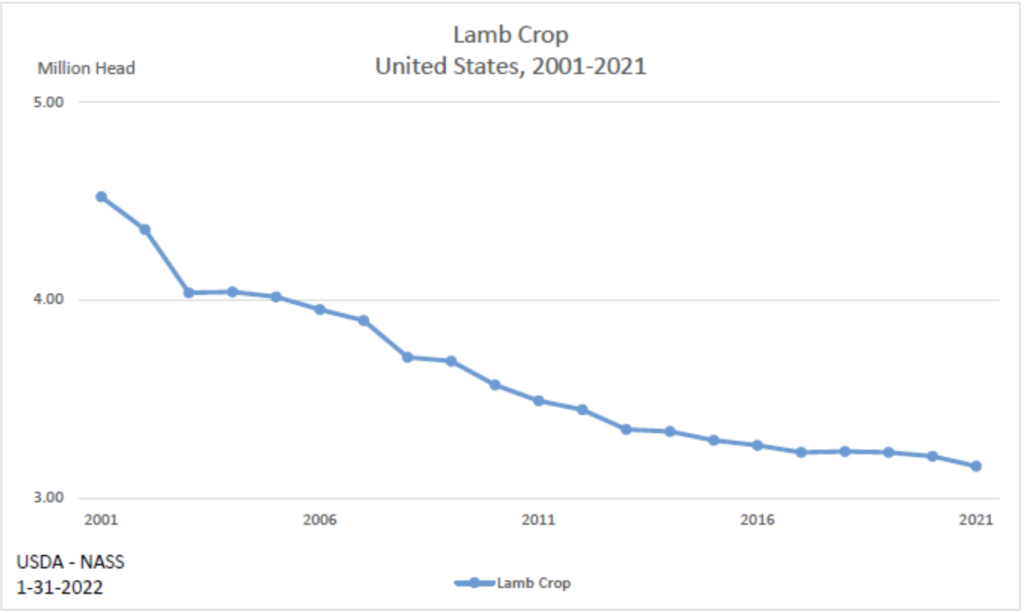
Supply in demand is also a huge factor in the explosive prices sheep and goats are bringing today. This chart from SheepUSA shows the decline in sheep production in the USA. Much of this decline was spurred by the discontinuation of wool subsidies in 1995. Without these subsidies, income from wool sheep was drastically cut. The expense of shearing and the near-worthless nature of wool (in conventional markets) make wool sheep more of a liability than an asset for most operations.
However, as ranches destocked their wooly backs, hair sheep began to take the stage. With exceptional carcass yields and no shearing expense, hair sheep became a profitable replacement to their wooly counterparts. (http://www.sheep101.info/201/hairsheep.html) In fact, in 2019 a major shift was cited when for the first time over 50% of sheep receipts at market were consistently hair-breed sheep.
With so many factors driving the price of small ruminants upward I’d say it’s a good day to be a shepherd!
Setting Up my Lakeland Sheep Handling System
Overwintering Cows for 50¢ a Day
How to Find Lease Land for Farming and Ranching
Why Grass Fed is Better than Grain Fed Beef
100% Grass Fed Beef vs. Grain Fed Beef:
Grass Fed Beef contains:
- 500% more CLA
- 400% more Vitamin A
- 300% more Vitamin E
- 75% more Omega-3
- 78% more Beta Carotene.
(Allan Nation, Grass Fed to Finish, p. 88)
In this article I am going to outline the benefits that come with eating beef, regardless of grass fed or grain fed. I will explain the science behind the nutritional superiority of organic,100% Grass Fed beef over grain fed beef. Finally, I will dispel the myth that grain is bad for cattle, revealing the true villain in the grain-crop arena and HOW Grassfed beef can be just as bad as grain-fed when it comes to this villian.
This info is in the context of beef, but a majority of the information transcends species will apply to grass fed lamb as well.
Benefits of Eating Beef (and meat in general):
First, let’s discuss the benefits of eating beef, whether grass fed or grain fed. Meat in general is one of the richest sources of complete-protein on planet earth. Every cell in the human body relies on an adequate intake of protein in order to heal, survive, and thrive. An article from healthline.com states that the consumption of beef helps build muscle mass, prevent anemia, and provide you with high levels of:
- Vitamin B12
- Zinc
- Selenium
- Iron
- Niacin
- Vitamin B6
- Phosphorus.
HOW GRASS FED BEEF IS BETTER THAN GRAIN FED BEEF:
Beef is a good food, but organic, 100% grass fed beef is a superfood. Organic, 100% grass fed beef is a nutritional tool that can equip your body to fight the effects of aging, cancer, diabetes, and heart disease. The scientific research I am getting ready to quote is from Chapter 6 of Allan Nation’s “Grassfed to Finish, a Production Guide to Gourmet Grassfed Beef”. I’d love it if you would use the link below to bypass Amazon and buy the book at ShopShepherdess.com.
In establishing 100% Grass Fed beef as a superfood, we must hone in on Conjugated Linoleic Acid (abbreviated CLA). CLA is an anti-carcinogenic, meaning it is a cancer-fighter. Dr. Tilak Dhiman of the Utah State University states: “CLA is the only [animal-based] compound that has shown in research trials all over the world to reduce cancer risk.” (p.93) Meat from 100% Grass Fed beef has 500% more CLA than grain fed beef.
In studies done on the benefits of Conjugated Linoleic Acid:
- 11/11 found CLA contributes to a decrease in cancer.
- 4/5 found CLA contributes to a decrease in body fat.
- 2/2 found CLA contributes to a decrease in heart disease.
- 6/6 found CLA contributes to increased immunity to disease.
- 2/2 found CLA contributes to increased bone density
- 3/3 found CLA contributes to a decrease in adult diabetes. (p. 88)
In addition to being 500% higher in CLA than grain fed beef, Grass Fed beef contains:
- 400% more Vitamin A
- 300% more Vitamin E
- 75% more Omega-3
- 78% more Beta Carotene. (p. 88)
One of the characteristics of Grass Fed beef vs grain fed beef is yellow fat. “The rich yellow fat in grass fed meat is reflective of a high beta carotene content which the human body is able to metabolize as Vitamin A: a major antioxidant.” (p. 84)
The vitamins and omegas mentioned above are major anti-aging properties, reducing oxidation in the body. What’s more is that Omega 3 contributes to brain fat and in a case study cited by Jo Robinson, author of The Omega Diet “children who were fed high Omega-3 diets had an IQ nine-points higher than the average american child” (p.91)
THE MYTH: GRAIN IS BAD FOR CATTLE
The concept that grain is bad for cattle is a myth. Grain in itself is not bad for cattle. Those who would argue that grazing animals do not benefit from grain consumption are ignoring the reality that herbivores of old would have regularly encountered and grazed wild grain. Additionally, many high-performance pasture grasses planted for beef cattle (rye, wheat, oat, etc) are part of the grain family. While it has been proven that meat from grain-supplemented cattle does not have the CLA content that 100% Grass Fed meat does, organic grain as part of a well rounded, pasture-based program is not a harmful thing.
Glyphosate, not grain is the culprit.
It is glyphosate, not grain that should be our concern as conscious consumers. Glyphosate can be found in both Grassfed and grain fed meat.
According to usrtk.org “Glyphosate, [is] a synthetic herbicide patented in 1974 by the Monsanto Company. Glyphosate is best known as the active ingredient in Roundup-branded herbicides”. According to EPA.gov in the USA “About 280 million pounds of glyphosate are applied…. annually” with 84% saturating soybean, corn, and cotton crops. Corn and soy are among the primary feedstuff provided to conventionally-finished beef in the USA.
Research done by the Pesticide Action Network found that Glyphosate contributes to cancer, hormonal disruption, DNA damage, birth defects, and neurological disorders (https://drdeeblanco.com/what-pet-parents-really-need-to-know-about-glyphosate/). Jo Robinson, author of The Omega Diet states “One, if it’s in their feed, it’s in our food. Two, if it’s in our food, it’s affecting our health. The new paradigm is we are what our animals eat” (p. 91)
An evaluation of the following graphs proves very thought provoking. The first is a graph showing the escalation of glyphosate usage since its introduction in 1974. The second is a chart from cancer.gov showing the rise in the prevalence of cancer in the USA, since 1975.
Unfortunately, because pasture and hay fields are one on the “top 4 list” for glyphosate application, grass fed beef can be just as great a risk for glyphosate exposure as grain fed beef. As a consumer seeking out grass fed meat for maximum health benefits, it is important to know your farmer and his practices. I advise visiting eatwild.com to find your nearest grass-based farmer.
How to Avoid Glyphosate Exposure:
While it is nearly impossible to avoid glyphosate exposure, there are 2 practical ways to reduce and fight it’s effects. #1. Transition to organic fruits and vegetables first. Fruits and veggies test the highest when it comes to Glyphosate residual. Buy organic 100% grass fed meats. These meats will have the best chance at freedom from glyphosate residuals. These meats will also be full of antioxidants and anticarcinogens which will contribute to your body’s ability to detoxify existing Glyphosate stores.
As organic grass farmers, glyphosates can make their way onto your farm via hay and non-organic feed supplement. Cutting hay from your own land or grazing your own stockpiled pasture overwinter is a means of avoiding glyphosate exposure via inputs.
The bottom line is: be aware, and do what you can. You can’t fix everything in one day, but there are things you can do today. Do not be stifled by what you cannot do, be motivated by what you can do!
-the Shepherdess
“Be not overcome of evil, but overcome evil with good.” Romans 12:21
References, citations, and further reads:
https://drdeeblanco.com/what-pet-parents-really-need-to-know-about-glyphosate/
cancer.gov
https://www.healthline.com/nutrition/foods/beef#vitamins-and-minerals
https://pubs.acs.org/doi/10.1021/acs.jafc.9b07819
http://npic.orst.edu/factsheets/archive/glyphotech.html
https://www.epa.gov/sites/default/files/2019-04/documents/glyphosate-response-comments-usage-benefits-final.pdf
WILL $1 BILLION RESCUE THE MEAT SUPPLY CHAIN?
In July of 2021, the president signed an executive order aimed at increasing competition in the meatpacking industry. An official statement from the White House reports that the current administration “will dedicate $1 billion in American Rescue Plan funds for expansion of independent [meat] processing capacity.” (WhiteHouse.gov)
Today’s article will provide a brief explanation of the independent meatpacking sector, a brief explanation of the President’s $1 BILLION Rescue Plan, finally evaluating the historical effects of subsidies in agriculture to get a deeper look at what it means when a government begins to fund an industry.
Tyson, Cargill, JBS, and National Beef have a combined weekly slaughter capacity of 1.6 million head of beef and pork in addition to 92 million chickens. This constitutes roughly 85% of the US meat supply. The remaining 15% of the supply chain is serviced by small-scale meatpacking operations. These small scale meatpacking facilities fall under 3 inspection categories: USDA, custom exempt, and state.
USDA Meat Processors (federally inspected):
USDA meatpacking facilities are at the top of the regulatory scale. These facilities must meet USDA-FSIS operating standards. These standards vary from state to state, but Texas meat inspection laws involve roughly 26 page of regulatory measures. In addition to meeting these standards, USDA meatpacking facilities must have a USDA inspector on site at all times. This agent will inspected the animal before slaughter, inspect the carcass after slaughter, and inspect the final cuts once they are packaged.
As a small farmer, having your animal processed at a USDA meatpacking facility allows you to resell your meat product nationwide.
Custom Exempt Meat Processors:
A custom exempt meatpacking facility is at the bottom of the regulatory scale. Custom exempt facilities are required to meet USDA operating standards and periodically subject to government inspection, but no USDA agent is required to be on site. The trade off is that meat processed at a custom exempt meatpacker cannot be resold.
As a small farmer using a custom exempt meat processing facility, you must sell the beef or lamb as a live animal. This is often done via shares where the buyer purchases 1/2 or 1/4 of the the animal from the farmer. The farmer coordinates transportation of the live animal to the meat processing facility and the owner of the animal-share will pay for processing and pickup the meat.
Many market farmers will use custom-exempt meatpackers, but doing so poses some challenges in the realms of consumer-education, given that a majority of shoppers are not entirely familiar with the animal-share sales model.
In 2019 The PRIME Act was introduced to Congress. This would lift all intrastate sales restrictions on meat processed at custom-exempt facilities. This would open up huge doors for many small farmers. Unfortunately the PRIME Act has made no movement through the congressional system, despite reintroduction in 2021. Here is a link where you can get in touch with your state representative regarding the PRIME Act. (https://www.congress.gov/bill/116th-congress/senate-bill/1620/committees)
State Meat Processors
A state meatpacking facility mirrors a USDA facility with respect to regulations. The ultimate difference, however, is that meat processed at state inspected facilities cannot be sold across state lines. The exception to this is if the state processor becomes part of the Cooperative Interstate Shipment Program. State inspected facilities can be found only in the select states that have opted to undertake authority for their meat packing operations (animalscience.tamu.edu). National Ag Law Center will provide you with a complete list of states and their processing status.
Since spring of 2020, nearly every independent meatpacking facility has been booked up 12-36 months.
Defining the $1 BILLION Rescue Plan

Now for an explanation of the $1BILLION Rescue Plan. This $1 billion has 4 primary allocations:
- $350 Million in aid to existing meat processing facilities.
- $375 Million in financial support for projects with the greatest near-term impact with (proposals for grants are being accepted in Spring 2022).
- $275 Million to make more capital available to independent processors that need credit.
- $100 Million in workforce training for independent meat packers.
The USDA has been commissioned to delegate a greater portion of these funds.
Historic Efficacy of Government Subsidies in the Food Industry:
According to a business plan put out by nichemeatprocessing.org in 2011, the cost of building a small meat processing facility with a weekly slaughter capacity of 4,000 head (varying species) is $3 million (figure adjusted for inflation). This cost assumes construction in a rural area and includes infrastructure and equipment.
If the $375 Million in project grants in the Rescue Plan went entirely to new construction, it would fund roughly 125 small meatpacking facilities with a combined weekly slaughter capacity of 500,000 head.
While it may appear to some that this input of funding would be advantageous we must take a look at historic outcomes attached to agricultural subsidies.
Historically, government funding accompanies government control. The first agricultural subsidies were introduced by Franklin D. Roosevelt in 1930’s. In the wake of the Dust Bowl and Great Depression, these subsidies were aimed at elevating crop prices and reducing soil loss. In the name of stabilizing the market and reducing soil loss, FDR’s subsidies gave the Federal Government widespread control of the production of agricultural commodities for the first time in US history. Nearly 100 years later, these subsidies are still being paid out under the “Farm Bill” label at a rate of $20 billion annually. Ironically, the lion share of this money goes to corn, soybean, cotton, and rice: crops that are among the most destructive to soil health. The USDA soil portal, cites that “the cost of soil erosion is estimated at $44.39 billion in the United States” with a recurring cost of $100Million annually. (farmprogress.com)
Another important thing to understand is that the government ultimately funds nothing: we do, or our children and grandchildren will. (show national debt chart) In light of this, the first solutions should be ones that do not come at the expense of the ones you intend to help.
Solutions that would cost the taxpayer nothing:
- Reinstatement of MCOOL. Mandating country of origin labeling for imported meat products in the US marketplace.
- Removing restrictions on the sale of meat from Custom-exempt processed facilities through the passage and enforcement of the PRIME Act.
- Removing interstate sales regulations on meat from State processors.
- Increasing taxation on imported meats.
- Tax breaks for independent meatpacking startups as well as ranch to consumer meat marketing startups.
These 3 Books outline how to raise cattle on forage only!
-
 The Art of Natural Cheesemaking by David Asher$40.00
The Art of Natural Cheesemaking by David Asher$40.00 -
 Pasture Management Starter Set (2 Books)$70.00
Pasture Management Starter Set (2 Books)$70.00 -
 Raising Sheep Book Bundle (3 Books)$107.00
Raising Sheep Book Bundle (3 Books)$107.00 -
 (E-BOOK) The Basics of Raising Sheep on Pasture$46.95
(E-BOOK) The Basics of Raising Sheep on Pasture$46.95 -
 The Basics of Raising Sheep on Pasture | A Book for Beginners in Sheep$46.95
The Basics of Raising Sheep on Pasture | A Book for Beginners in Sheep$46.95 -
 The Shepherdess Library Bundle (5 Books)$180.00
The Shepherdess Library Bundle (5 Books)$180.00 -
 The Art and Science of Grazing Book by Sarah Flack$40.00
The Art and Science of Grazing Book by Sarah Flack$40.00 -
 Management Intensive Grazing Book by Jim Gerrish$40.00
Management Intensive Grazing Book by Jim Gerrish$40.00 -
 Salad Bar Beef Book by Joel Salatin$35.00
Salad Bar Beef Book by Joel Salatin$35.00
So what is our solution: work the land that’s in front of us. Build the soil we stand on. Support your closest meatpacker, despite the fact that that they are booked to the hilt. And don’t imagine that government subsidies are the solution. In the words of Thomas Jefferson: “A government big enough to give you everything you want, is strong enough to take everything you have.”
-the Shepherdess
“Be not overcome of evil, but overcome evil with good.” Romans 12:21
Further articles and citation:
Why Meat is expensive, but ranchers are broke. | Explaining the beef cattle crisis in 2022
Since 1990, the price of ground beef at the grocery store has gone up 40% while the price of live beef cattle has dropped by 50% (figures adjusted for inflation). Why is the consumer paying big, and the beef rancher going broke? Where is all the money going?
- Beef Labeling Bill
- “GRASSFED BEEF 101”
- EAT WILD
- SALAD BAR BEEF BOOK
- FARM ON THE WEB MARKETING COURSE
In this article I am going to give a brief explanation of how the conventional beef industry works, why the prices at the grocery store are so high, and 3 ways you can still profit off beef cattle in 2022.
Whether you are a grocery shopper or aspiring beef rancher, the upcoming article will help you navigate the beef crisis in 2022.
Explaining US Beef Supply Chain:

In the United States there are 2.04 MILLION ranchers, 26,586 feed lots, 4 meat packers, and 355 million consumers. If you were following closely, you will already realize a bottleneck in this system. In the conventional beef industry the cow-calf producer raises a calf for 6-12 mos. The calves are then auctioned off to backgrounders and feed lots who fatten the beef for roughly 9 months. Finally, the feed lots sell the fattened cattle to meatpackers who, within a week, process and pack the beef for distribution to grocery stores.
The pricing in the beef cattle industry is largely dictated by the four meatpackers: Tyson, Cargill, JBS, and National Beef Packing Co. These four meatpackers control 80% of the United State’s beef supply. This hyper-centralization of processing, packing, and distribution is what enables live cattle prices to be manipulated and ultimately driven down.
Meatpacker manipulation is not a new thing in the United States. A web search on the “Big 5” will quickly show you that the beef industry has been battling the situation since 1890.
The margins in the meatpacking industry are huge. Kansas Cattleman Steve Stratford reported that in 2020 the Big 4’s margins on a choice steer hovered around $1000 per head. That same report indicated 500-600K head of choice steer are processed every week, giving the “Big 4” a collective gross margin of $2.6 BILLION per month.
There is a lot that goes into how meatpackers manipulate live cattle pricing, but the bottom line is that the “Big 4” have contributed to the 50% decline in live cattle pricing over the last 30 years.
Why are these packers driving US Beef rancher out of business? Don’t they need US beef producers to stay in business? Not entirely. In 2016 the USDA repealed enforcement of the MCOOL Act.
MCOOL stands for Mandatory Country of Origin Labeling. MCOOL “requires retailers to provide their customers with information regarding the country of origin of regulated commodities” such as beef, pork, and chicken (USDA.gov).
The repeal of MCOOL enables foreign beef carcasses to be imported, processed, and labeled “Product of the USA” simply because they were cut up and vacuum sealed in the USA. I predict a massive explosion in beef imports is coming down the pipe.
A proposition to reinstate MCOOL was introduced to the US Congress in September of 2021. If you are a beef rancher (or prospective beef rancher) I would highly recommend going here and following the instructions on how to contact your senator to support the bill.
Why is Beef so Expensive at the Grocery Store?:
The price of ground beef at the grocery store is up by 40% since 1990. This price increase has little to do with food shortages. As mentioned above, four meatpackers control 80% of our nations beef supply and there are two ways in which these meatpackers can manipulate consumer beef pricing. First, due to absence of competition, meatpackers can simply name their price. Second, meatpackers can limit supply output, thus manufacturing a supply-in-demand situation.
Each of these scenarios is stimulated by the absence of competition in the meatpacking industry.
The “Big 4” vs. “The other 20%”:

Small farmer makes up a greater portion of the remaining 20% of the meat supply chain. These small-scale meat growers collaborate with private processors to deliver meat direct to consumer. They are the saving grace of the US Food Supply Chain. Small farmers are the reason many Americans retained access to quality food during supply chain disruptions in 2020 and 2021.
The illustration below shows you the balance in the local farming system. Rather than a bottleneck of centralized processing power, local farmers work with private processors to deliver meat direct to the consumer.
The survival of the local farming system relies on the support of you, the consumer.
What can the grocery shopper do to keep meat prices from going up?:
As grocery shoppers we must find and support small growers. Go to EatWild.com for a directory of local meat growers in your area. Grocery shoppers face the same risk as the rancher. We will be financially compromised by meatpackers. Once local farmers and independent processors are gone, these four meatpackers will have complete control of meat production and pricing in the USA.
By supporting the small growers on EatWild.com you are securing a local food system and receiving a superior product. All of the producers on eatwild.com raise their animals on fresh pasture and not in feed lots. You may pay slightly more at a local farm than you would Walmart, but you are supporting a farm that could one day save your life.
How to make profit on Beef Cattle in 2022?:
There are 3 things you need to do to make a profit off of beef cattle in 2022. These 3 elements and more are outlined in Joel Salatin’s Book Salad Bar Beef. I highly recommend you read this book before buying cows.
- Go grass based. Select cows that have been bred for a grass based system (that link will take you to an article on how to select grass based genetics). Reduce feed inputs by carefully managing your forage resource. Use rotational grazing to increase the feed capacity of your land. Create stockpile pastures to avoid hay feeding as you overwinter. Only carry as many cows as your land can support without supplemental feed (overwintering excepted).
- Cut out the middle man. Finish your beef on grass and sell it direct to consumer. This route takes more elbow grease in the marketing and establishment phase, but it is the only way to eliminate the middle man. Take a look at Farm on the Web marketing classes for guidance on building out a direct to consumer marketing strategy.
- Avoid expensive infrastructure. In today’s beef market, tractors, trucks, and expensive barns will put you out of business before you get started.
-
 The Art of Natural Cheesemaking by David Asher$40.00
The Art of Natural Cheesemaking by David Asher$40.00 -
 Pasture Management Starter Set (2 Books)$70.00
Pasture Management Starter Set (2 Books)$70.00 -
 Raising Sheep Book Bundle (3 Books)$107.00
Raising Sheep Book Bundle (3 Books)$107.00 -
 (E-BOOK) The Basics of Raising Sheep on Pasture$46.95
(E-BOOK) The Basics of Raising Sheep on Pasture$46.95 -
 The Basics of Raising Sheep on Pasture | A Book for Beginners in Sheep$46.95
The Basics of Raising Sheep on Pasture | A Book for Beginners in Sheep$46.95 -
 The Shepherdess Library Bundle (5 Books)$180.00
The Shepherdess Library Bundle (5 Books)$180.00 -
 The Art and Science of Grazing Book by Sarah Flack$40.00
The Art and Science of Grazing Book by Sarah Flack$40.00 -
 Management Intensive Grazing Book by Jim Gerrish$40.00
Management Intensive Grazing Book by Jim Gerrish$40.00 -
 Salad Bar Beef Book by Joel Salatin$35.00
Salad Bar Beef Book by Joel Salatin$35.00
I believe there is huge opportunity for direct-to-consumer grass-fed beef sales in 2022. Grain prices are on the rise, paving the way for the price of grass fed beef to compete with grain fed beef for the first time ever. The rise in prices at the grocery store will curb the sticker shock that can sometimes accompany grass fed beef.
Warning!: As you enter the beef arena you are entering a war zone. Your competition is unwelcome. You will face policies and red tape that are designed to put you out of business. You must equip yourself to defend your turf as a small-scale beef producer.
-the Shepherdess
“The scatterer has come up against you. Man the ramparts; watch the road; dress for battle; collect all your strength.” Nahum 2:1
I Asked Bill Gates, “Why Farmland?”
The Last Day!
Hello friends,
If you have been following my newsletter, you will know about the 6-Video Business Bootcamp Bundle I released on Monday! Today is the last day to purchase this bundle!!
In this 6-Video Bundle I walk you through:
•How to setup a Newsletter.
•How to Build a Website.
•How to Sell your Products Online
•How to Market on Instagram
•How to Market on Facebook
•How to Market on Youtube
Here is a quick video that describes the Business Bootcamp Bundle!
You can still buy the classes after this sale, however the price will go from $13.70 per class to $21 per class. This Bundle offer is probably one of the best investments you can make for your business in 2022!!
-the Shepherdess
“So then neither he who plants is anything, nor he who waters, but God who gives the increase.” 1 Cor. 3:7
A Millionaire Farmer Told Me This…
Prepare for the 3rd Wave of Food Crisis
The Worst Advice for Your Farm Business
HOW SHEEP EARN ME 400% MORE THAN COWS
Full Time Farmer with Only 20 Acres!!
ARE SHEEP PROFITABLE? Why I Chose Sheep Over Cows for My Farm Business
Are sheep profitable? Are sheep more profitable than cows? Why did you choose sheep over cows? If I start a sheep farm, how long will it take to become profitable?
I receive these kinds of questions regularly. Unfortunately, the answers will be different for everyone and you have to find the answers for yourself, based on your own research. In farming there are so many variables: geographic location, natural resource, human resource, and most importantly, what your local market will support (aka, who is going to buy your farm goods). And even after all of this research, there is a fair amount of risk involved.
In my context, Lord-allowing, sheep present a projected gross revenue that is approximately 400% greater than beef.
I am going to walk you through the evaluation process that lead me to choose sheep instead of cows for my farm business. I am going to share some of the pros and cons of sheep vs. cows. I am going to highlight the profit-killers that sheep farmers wrestle against. Finally, I am going to walk you through a real-time example of how sheep offer a 400% greater revenue potential on my small acreage farm than cows do.
Sheep vs. Cows:
| Sheep: | Cows: |
| ❌Need daily monitoring. | ✅Can be left alone for weeks on end. |
| ❌Easily killed by predators (defenseless). | ✅Can largely defend themselves. |
| ❌Frequently die of parasites. | ✅Rarely die of parasites. |
| ❌Require more expensive fencing. | ✅Require less expensive fencing. |
| ❌Lambing must be monitored closely to avoid significant mortality. | ✅Calving typically requires minimal monitoring (heifers being the exception). |
| ❌Need regular hoof care (unless terrain is rocky). | ✅Do not need regular hoof care. |
| Sheep: | Cows: |
| ✅Wean their body weight equivalent in offspring every year. | ❌Wean 1/2 their body weight equivalent in offspring every year. |
| ✅Begin reproduction as early as 9 mos. | ❌Begin reproduction at 14 months. |
| ✅Raise twins and triplets. | ❌Raise singles (twins generally do not thrive). |
| ✅My Dorper sheep cost $10 per head to overwinter. | ❌My beef steer cost $150-250 per head to overwinter (cost hinges on availability of stockpile forage). |
| ✅Easy to grass-finish on low-moderate pasture quality. | ❌Require high quality pasture for a high quality grass finish. |
| ✅ $3/lb 2021 USDA Market Average. | ❌$1.8/lb 2021 USDA Market Average. |
| ✅Market prices not as easily manipulated. | ❌Market prices easily manipulated by systemic and political factors. |
| ✅Thrive in drought (*at least my Dorpers do). | ❌Must be destocked in drought. |
In short, sheep require significantly more time and human resource than cows. You have to be a shepherd in order to be successful with sheep. If you are willing and able to undertake the role of shepherd, sheep reproduce twice as fast as cows and bring almost twice as much at U.S. cattle auctions than cows. Sheep thrive on pastures that would starve a cow and are a drought-resistant cattle option.
How do I determine profitability? I make sure all costs are counted and revenues exceed costs. But here is where I have to be honest: I am not counting the cost of my time at this point. I am giving my sheep business my time for free… and I have farm hands who donate 4-8 hours per week to help me with heavy lifting. If I were to put a price tag the amount of time I am giving this farm, I would probably not be profitable for 72 years. Just being honest here. But I’m in good company… this seems to be the story of every good rancher’s life.
Two major profit-killers for sheep farmers are PREDATORS and DISEASE.
Predators can wipe out an entire small flock in one night. Disease (internal parasites, vitamin deficiencies, hoof infections, etc.) is part of a fallen world and will always be present on some scale or another. Regenerative Agriculture will never completely eradicate death and disease. The health and protection of my sheep are actually things that I include in my regular prayers. They are profit-killers that only the Lord can protect me from.
Why did I choose sheep over cows for my farm business?
The Lord opened doors to several different market streams:
About one week before I bought the flock I had a local grass-fed meat market contact me. They had seen my work with the flock on Instagram and called to discuss a recurring order for 40 lambs per year. This was the ultimate push for me: a serious meat buyer.
I had also begun to research the Dorper breed and found it was (and is) growing in popularity. I realized that this flock of 25 purebred Dorper sheep was a diamond in the rough. It held far more potential than lamb chops; live animals were (and are) in high demand. Thus, a second market emerged: breeding stock.
To top it all off, I had begun making videos about my farm work. I initially began this as a video journal for myself, but people started watching and enjoying my videos as well. This presented a third marketing and income opportunity: sheep-based education and entertainment.
In my area, there is significant competition for grass-fed beef:
Selling grass-fed beef was my initial plan for profit. I did some market research (google and farmer’s markets) and found there were already some well-established grass-fed beef producers in my area. I also live in a rural area where everyone grows their own beef. I knew it would not be impossible to carve out my own space in the market, but I realized it would take a lot more time to do so. What’s more is that pasture raised lamb was retailing at about 30% above grass fed beef. After this market research, sheep appeared a faster track to profitability.
Sheep presented higher revenue potential for my small acreage:
The best way for me to explain this is to build out my real-time example with the 23 acres of pasture I have. I estimate that with my intensive rotational grazing my 23 acres can support 10 animal units, or 10,000 lb worth of animal (**please know that I am approaching this number incrementally to monitor how my land responds to the animal load). I am going to build this out based on current USDA market prices for conditioned beef steer of 550lb and feeder lambs of 65lb.
| Sheep: | Cows: |
| 10,000lb = 80 Dorper Ewes | 10,000 lb = 9 Cows |
| 80 ewes = 10,400 lbs worth of saleable offspring in every year. | 9 cows = 4,950 lb worth of saleable offspring in every year. |
| Current USDA Market price is $3/lb | Current USDA Market Price is $1.80/lb |
| 10,400 x $3 = $31,200 | 4,950 x $1.80 = $8,910 |
| ✅Estimated Gross Revenue Potential: $31,200 | ⭕Estimated Gross Revenue Potential: $8,910 |
My gross revenue potential is higher than what is listed above for a few reasons: I am running purebred and registered full-blood breeding stock, I am marketing my flock through value-adding consumer education (videos), I am running grass-based breed selection (cutting input costs and improving the value of my breeding stock), and I am selling any meat products direct to consumer.
USDA Market Price Evaluation:
I advocate for private sales, but pricing for private sales are often dictated by USDA market (auction) values. As I reviewed USDA market prices for beef and sheep, I realized that sheep were bringing almost double the price of beef cattle.
My lifestyle allows me to be a shepherdess:
I work from home, and have been doing so for 10+ years. I love being right here, at home on my farm. I have the ability to give my sheep the time they need. While I never would have imagined myself to be in this position, I love the farm work and farm life. I now understand why the aged farmers say “you have to love this life”. Some of the challenges you encounter will make you feel like you are cracking in half. No amount of money can make the stress worth it… but if you love something, you are willing to give it more than you’ll ever get back. And that is exactly the place I have come to as a farmer and shepherdess.
Sheep Offer Me a 200% Faster Return on Investment:
I will walk you through both a beef-to-market timeline and a sheep-to-market timeline. In order to generate sizeable revenue with a small beef herd, I believe that direct to consumer meat sales is the only way to go. That is what this evalutaion will reflect.
Journey to cash-flow with beef
(with a herd and not a stocker-steer operation)
- 9 months gestation.
- 22-24 months to harvest on a steer.
ROI (return on investment) for Beef = 33 months.
Journey to cash-flow with sheep
- 5 months gestation.
- 4 months to weaning and sale of breeding stock or 6 months to harvest of lamb.
ROI (return on investment) for Sheep = 9-11 months.
Two key elements that make sheep a better fit for my context are: I have time to be a shepherdess, and I am working on small acreage.
The bottom line of my journey is that I am farming sheep because the Lord has lead me to farm sheep. The Bible says that whatever your hand finds to do, do it with all your might. That why I am giving this effort all I’ve got... it’s not about money (TBH: I could make more money waiting tables right now). While I am doing my best to be wise and make decisions that may lend to profitability, I realize that the Lord is in control of profitability.
Farming is a humbling thing because it makes you realize how little you know. Despite these plans and evaluations, at the end of the day I am praying the Lord blesses my efforts. And that is my primary hope for profitability.
So that’s it! This is an explanation of why I chose sheep over cows for my small farm business. I hope I presented my evaluation in such a way that will help you to make the right decision for your farm.
-the Shepherdess
the story of Artaban

My Documentary for the National Grazing Lands Conference
National Grazing Lands Coalition invited me to speak at their National Conference this year. While I am unable to attend the national conference in-person, National Grazing Lands allowed me to submit this video documentary on my small scale cattle ranching (to be aired at the conference)! This is a pretty complete summary of the past 18 months of my life as a beginner farmer. It outlines my micro ranching for profit startup, my transition from beef to Dorper sheep as the main focus in my farm business, and the ways I am marketing my farm products (Dorper sheep).
Video Timestamps:
2:54 Micro Ranching for Profit
14:20 Why did I switch from beef to Dorper sheep?
16:24 American Agriculture in Crisis.
20:04 How I am selling my farm products.
27:39 This is harder than I though it would be.
Thank you so much to all who have been with me on this journey from the very beginning. I am so grateful for your support of my Dorper sheep farm.
-the Shepherdess
